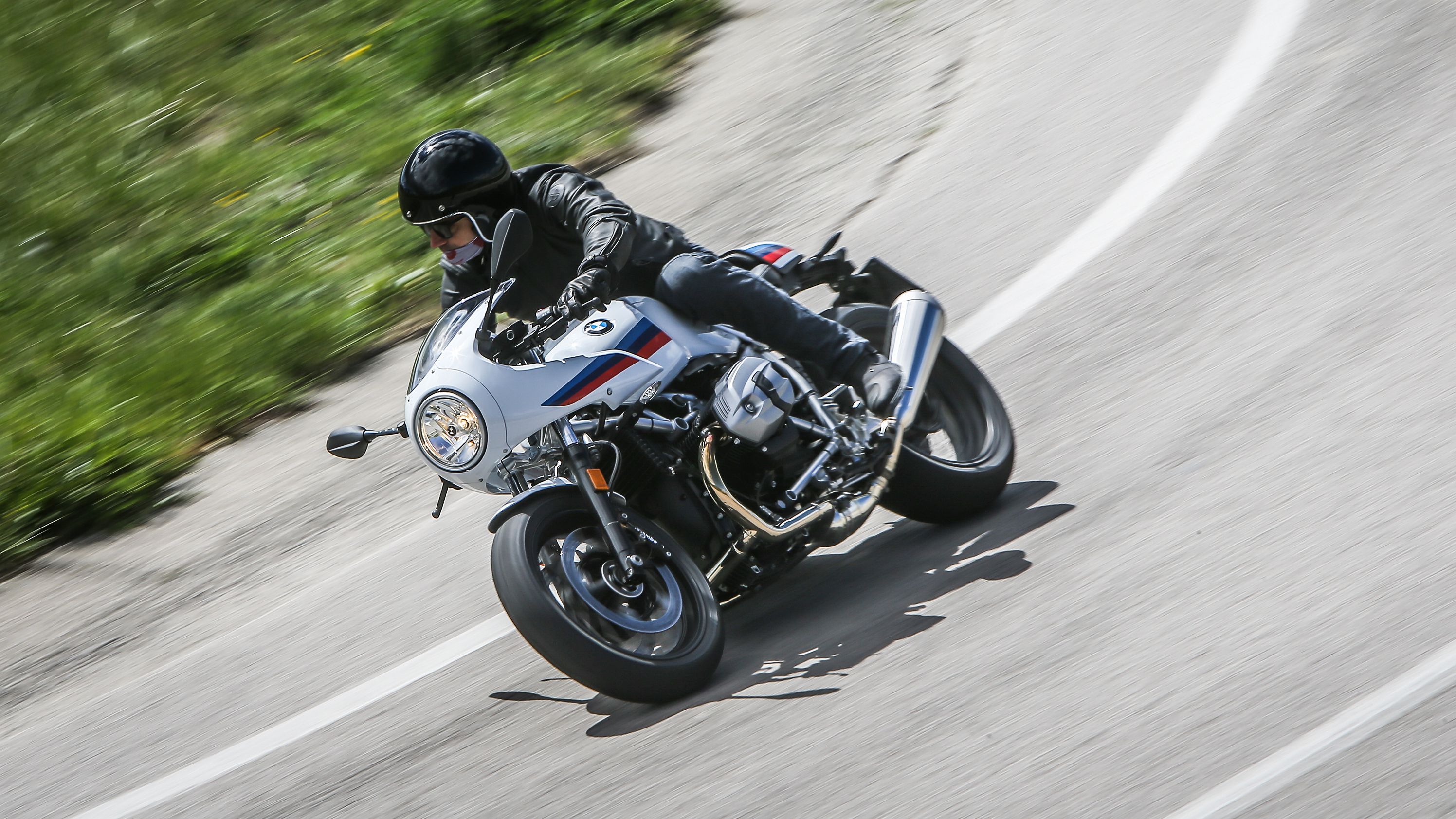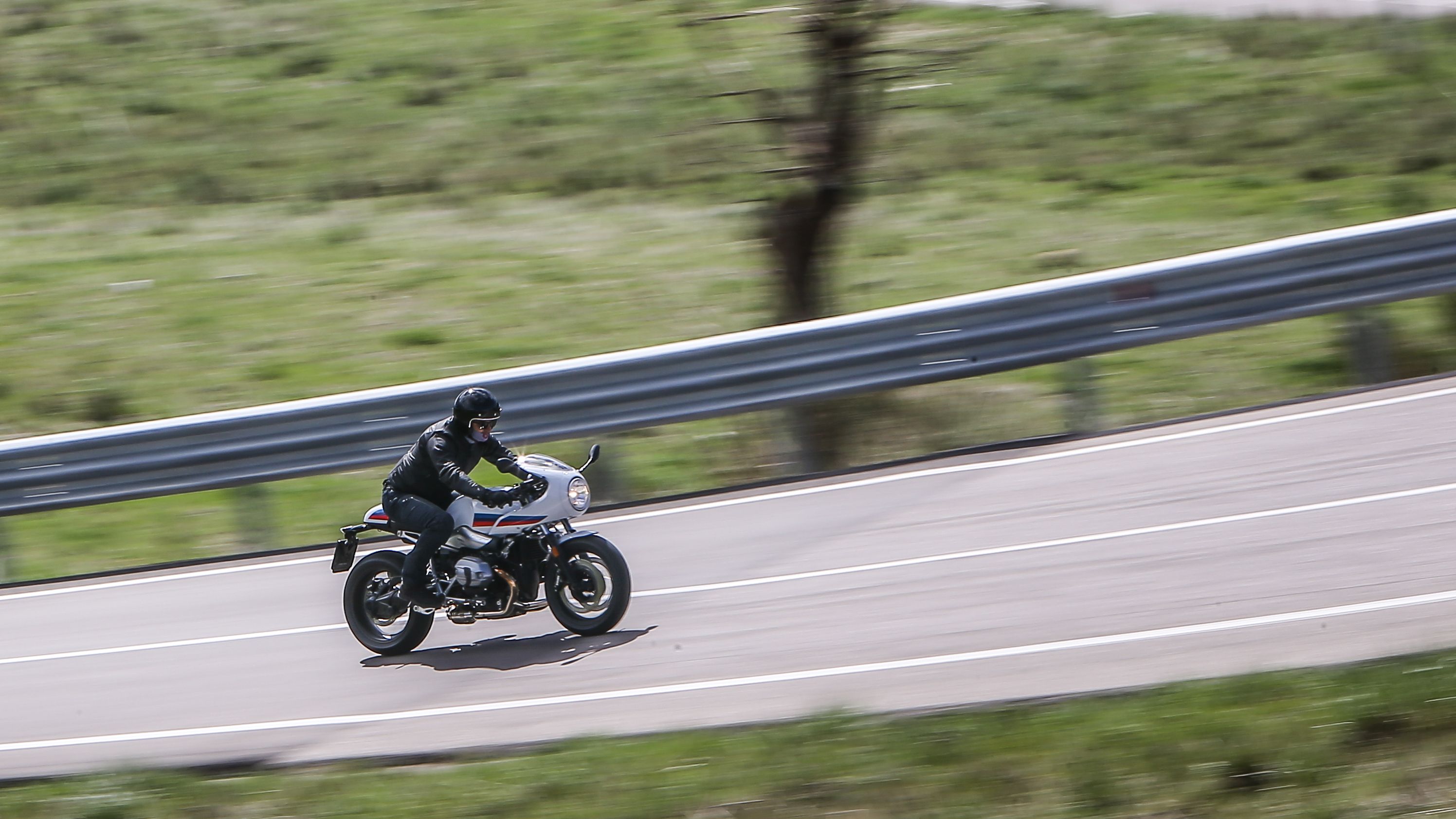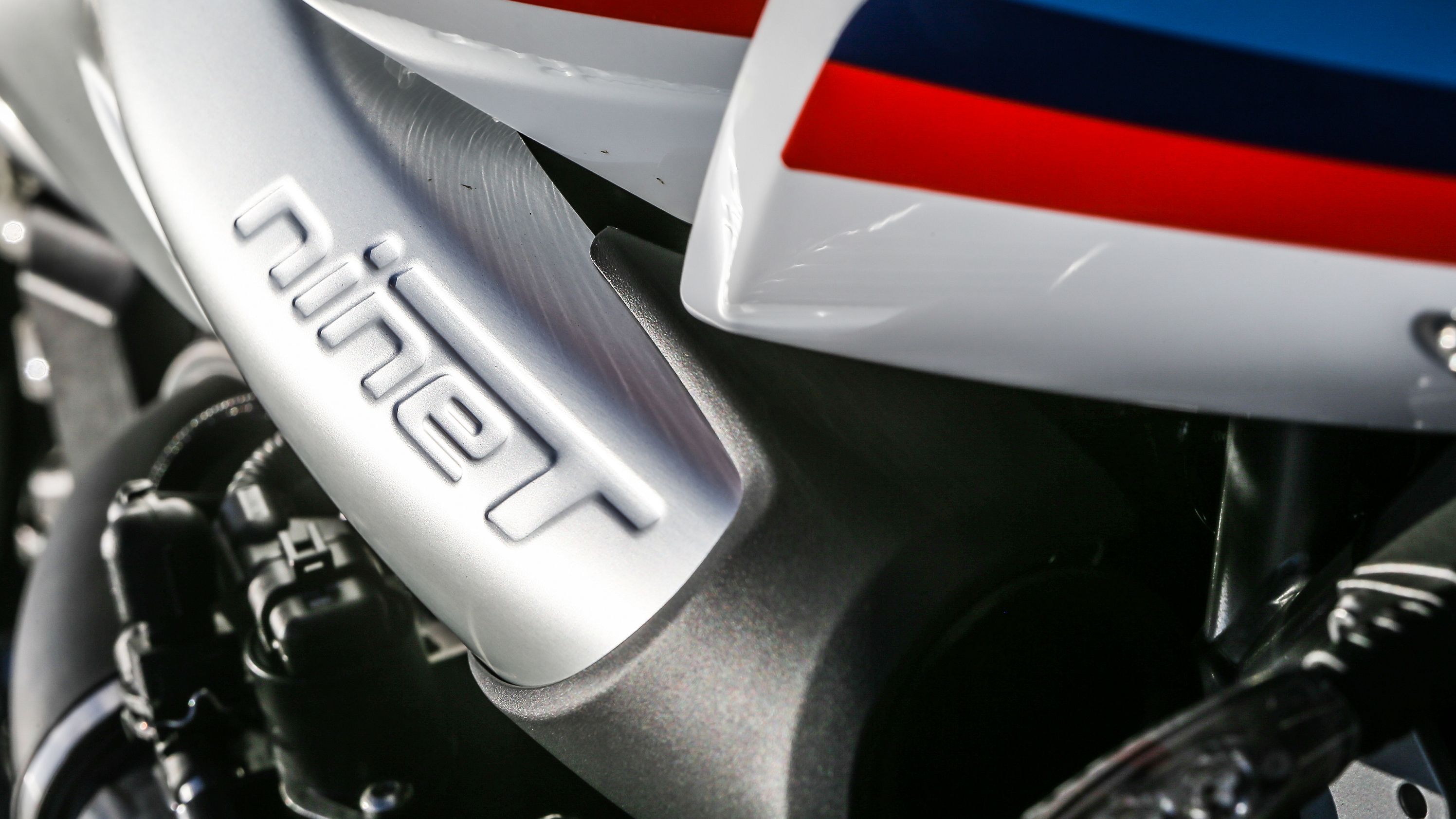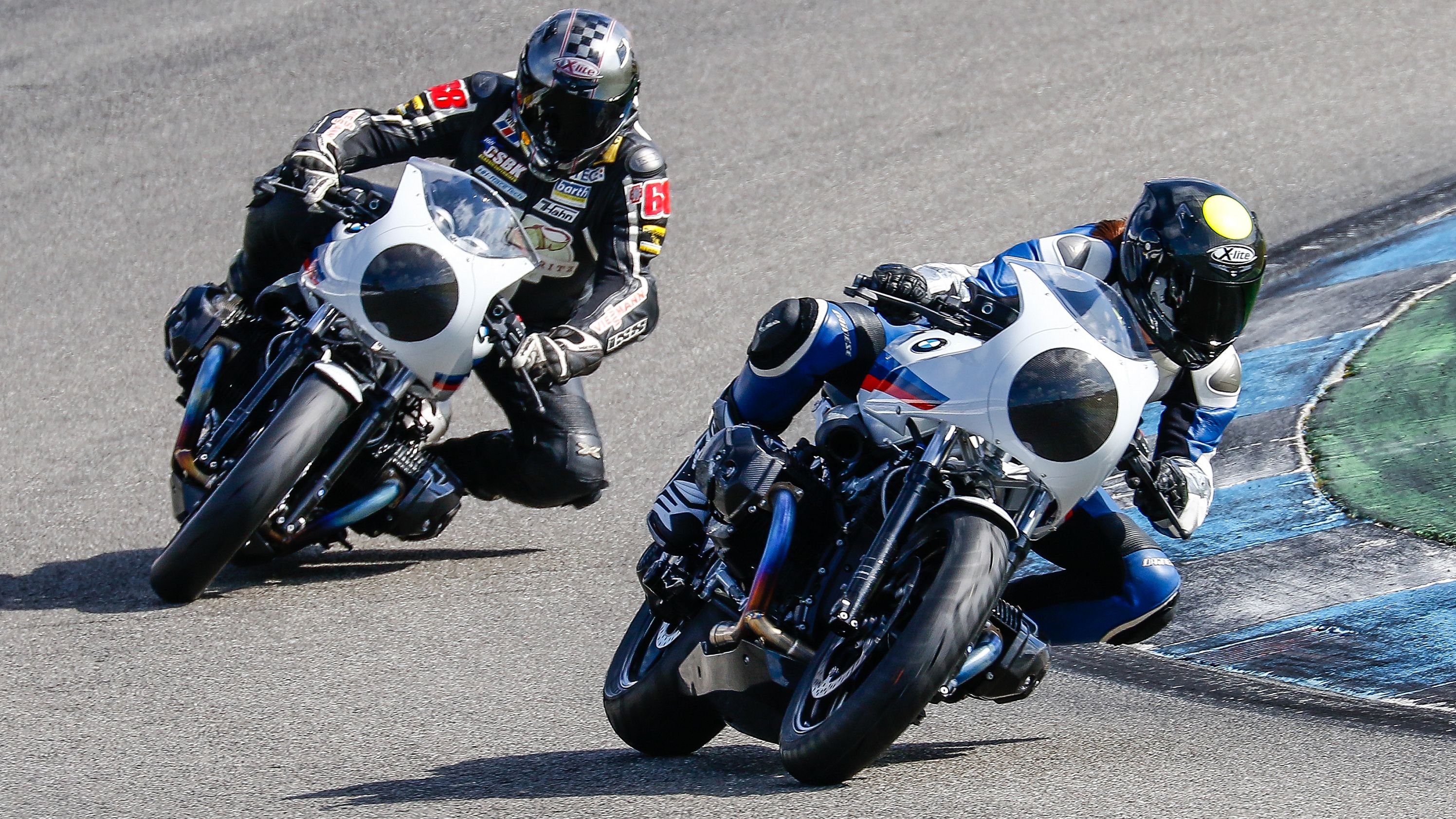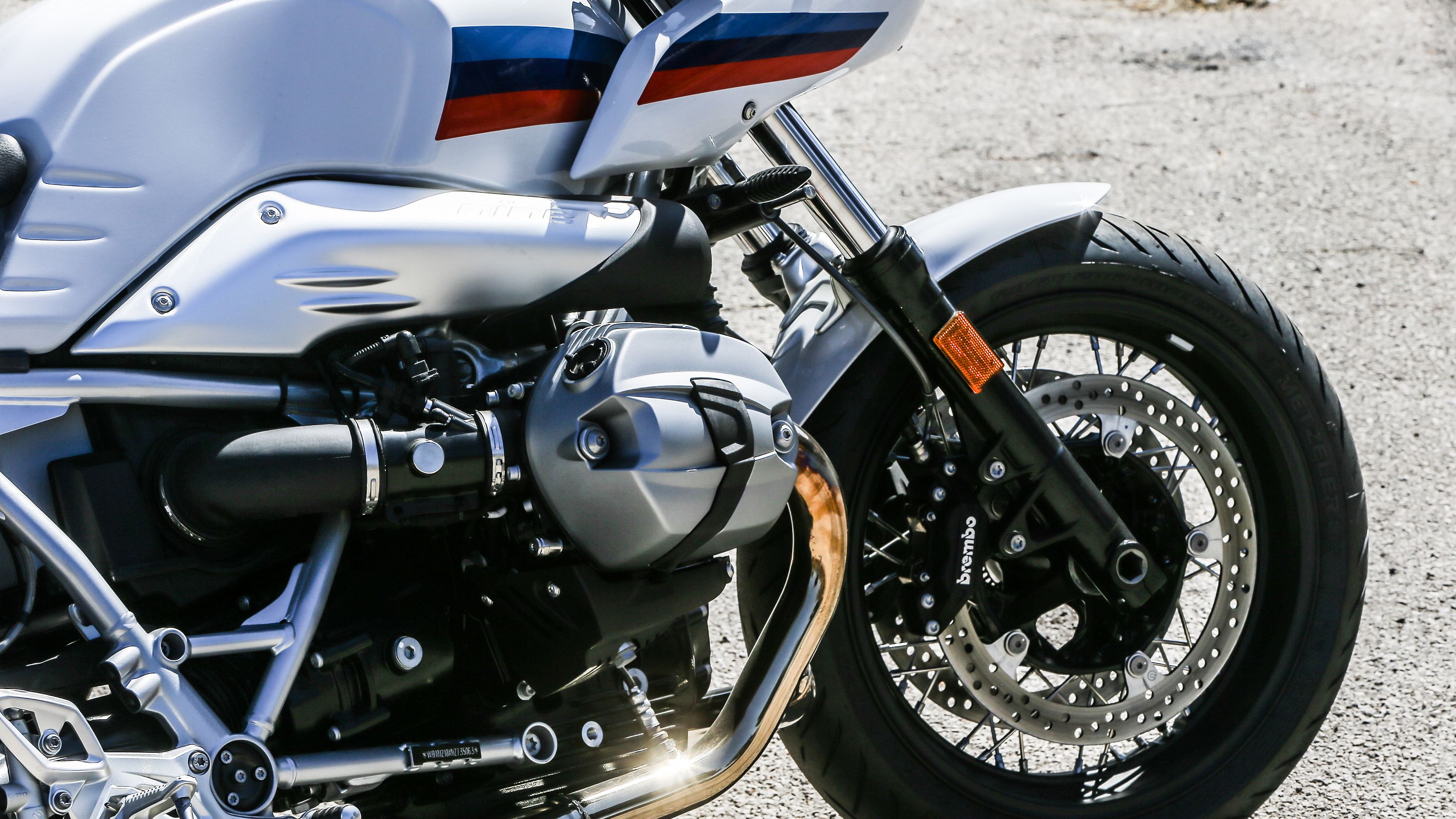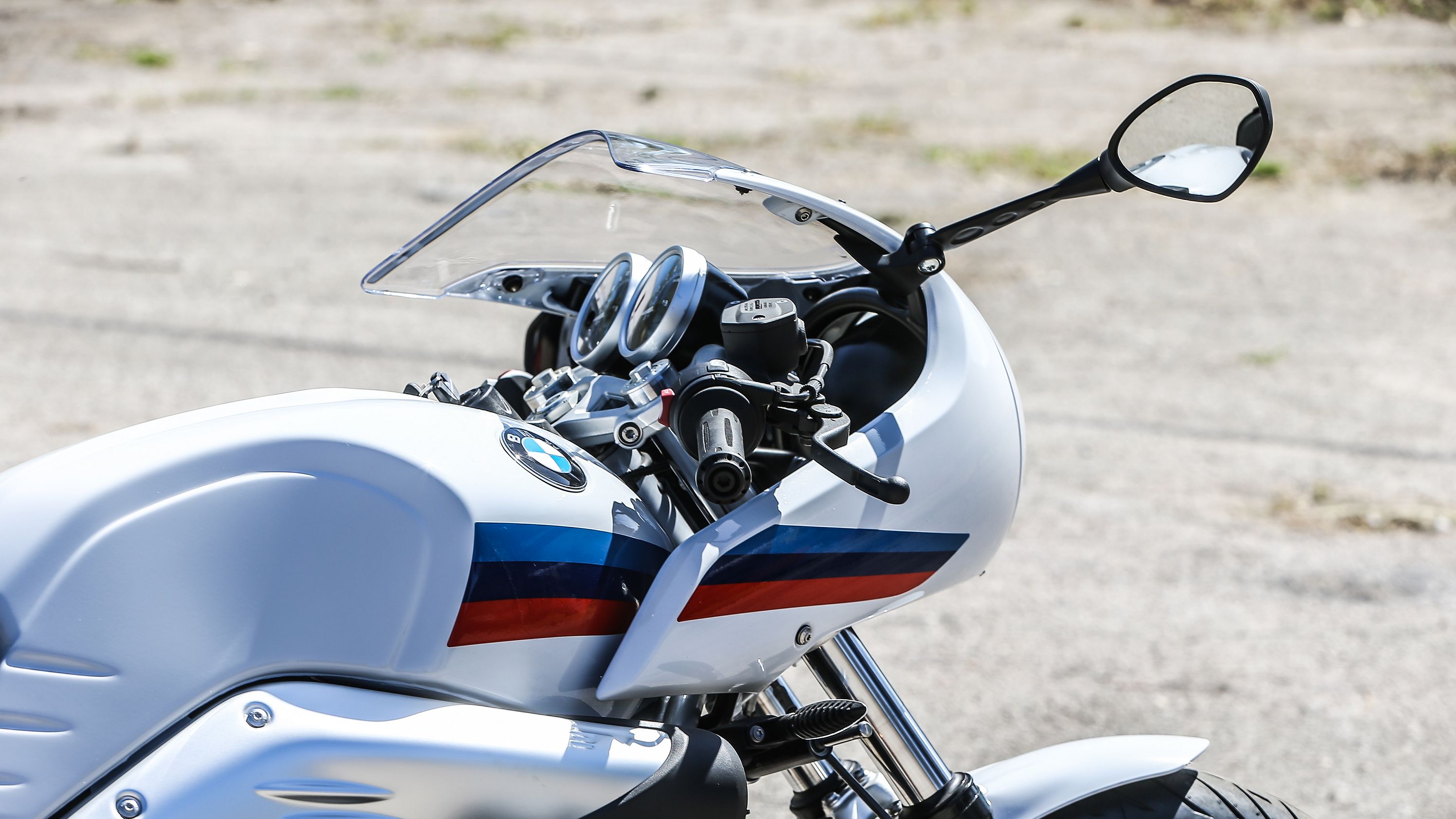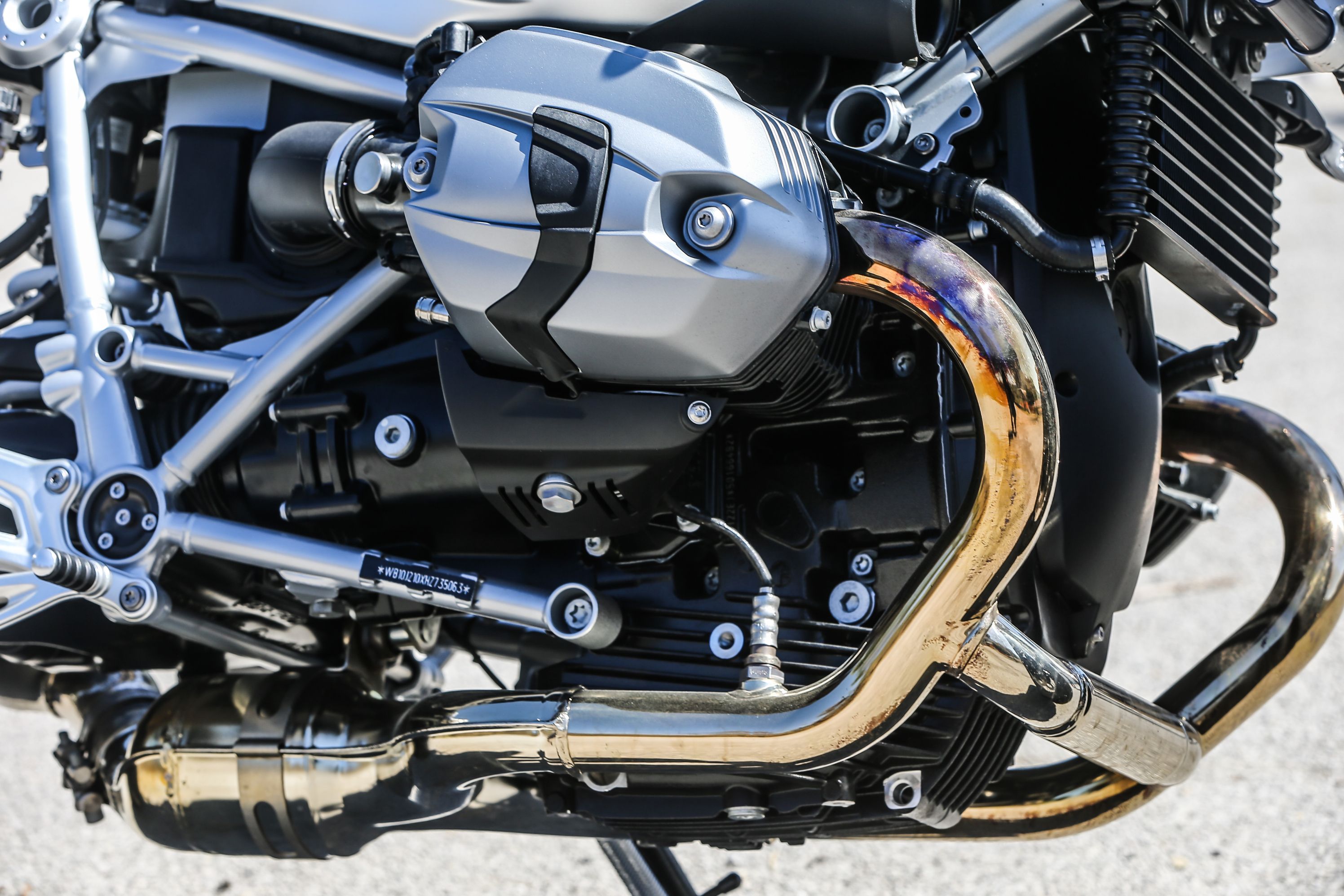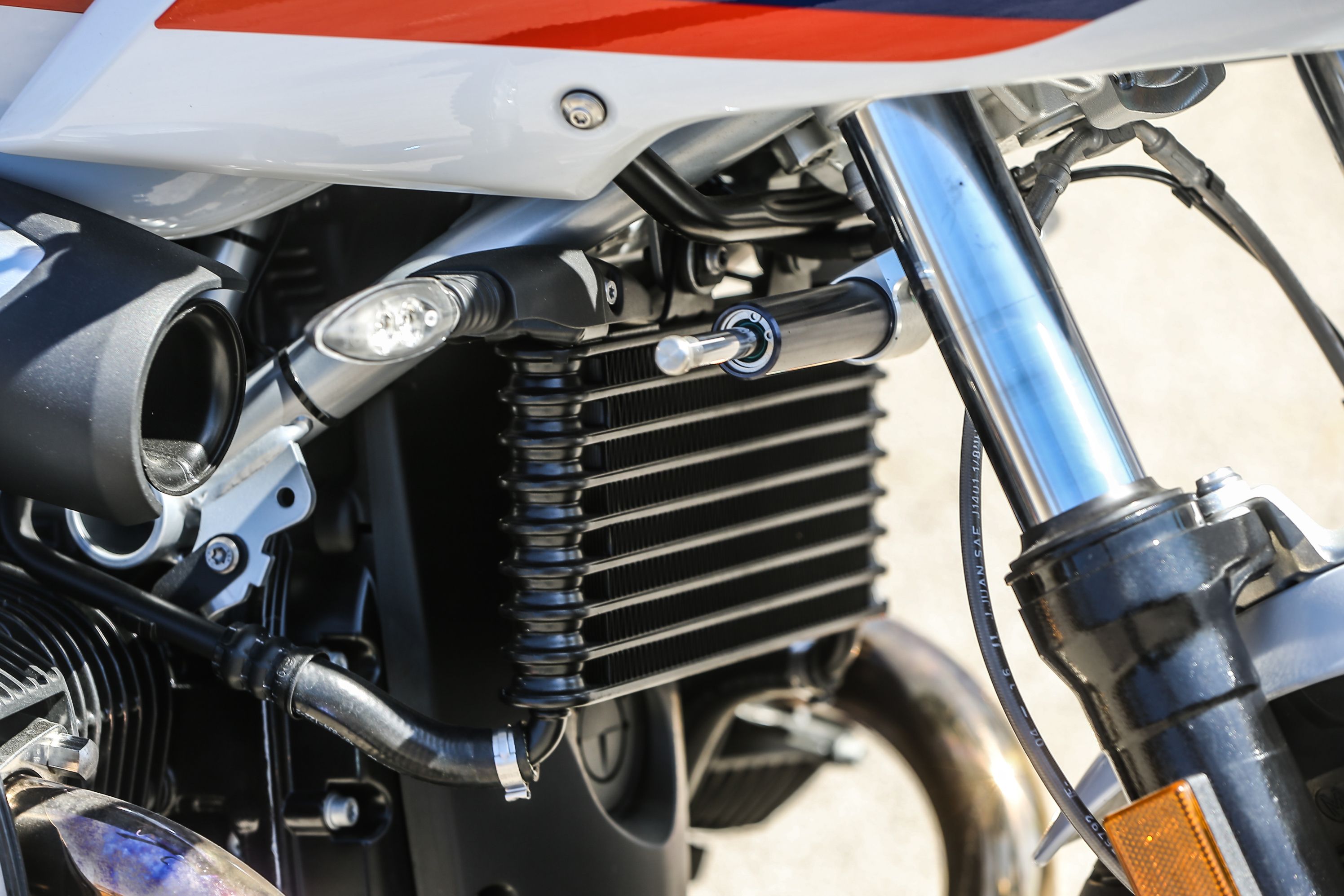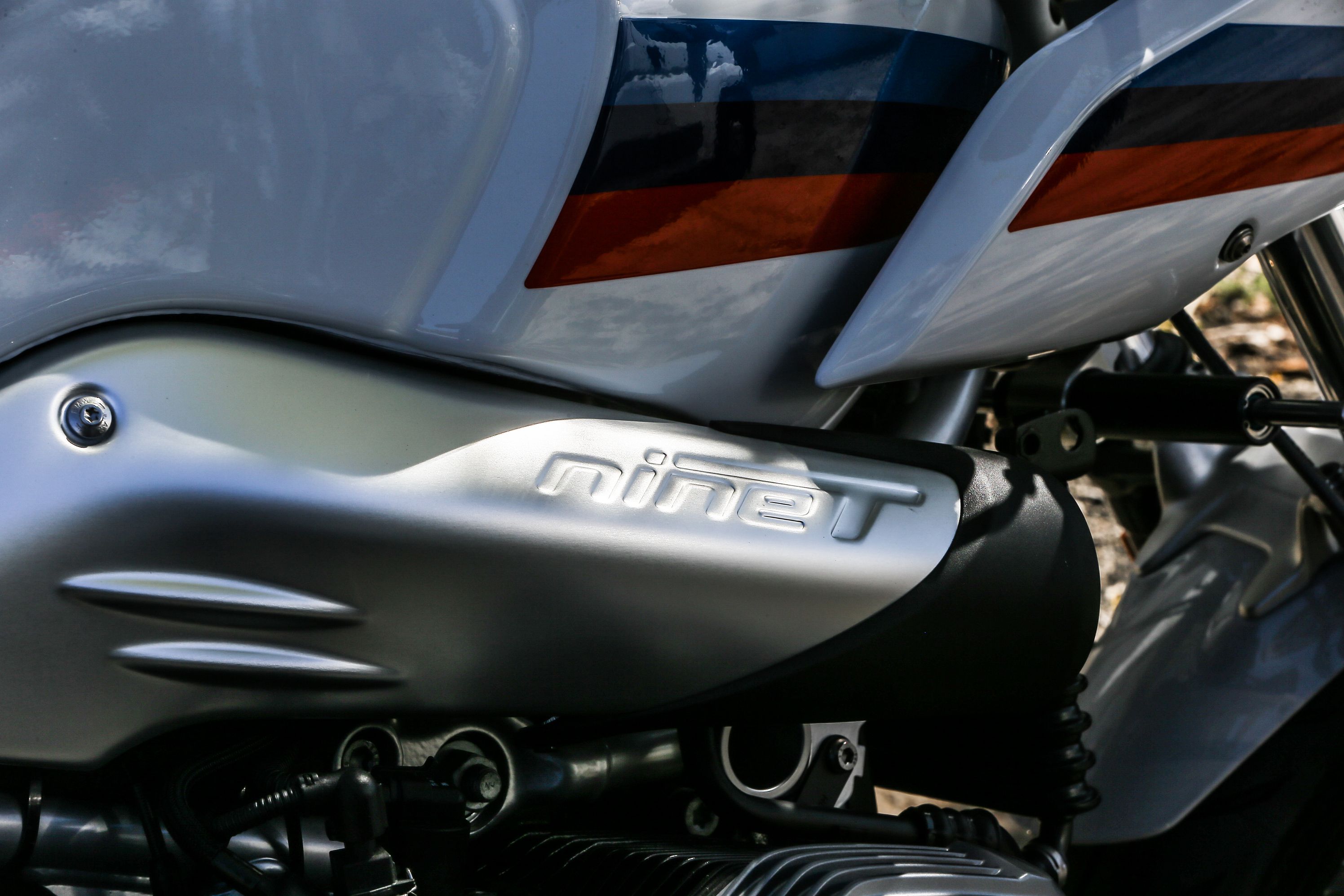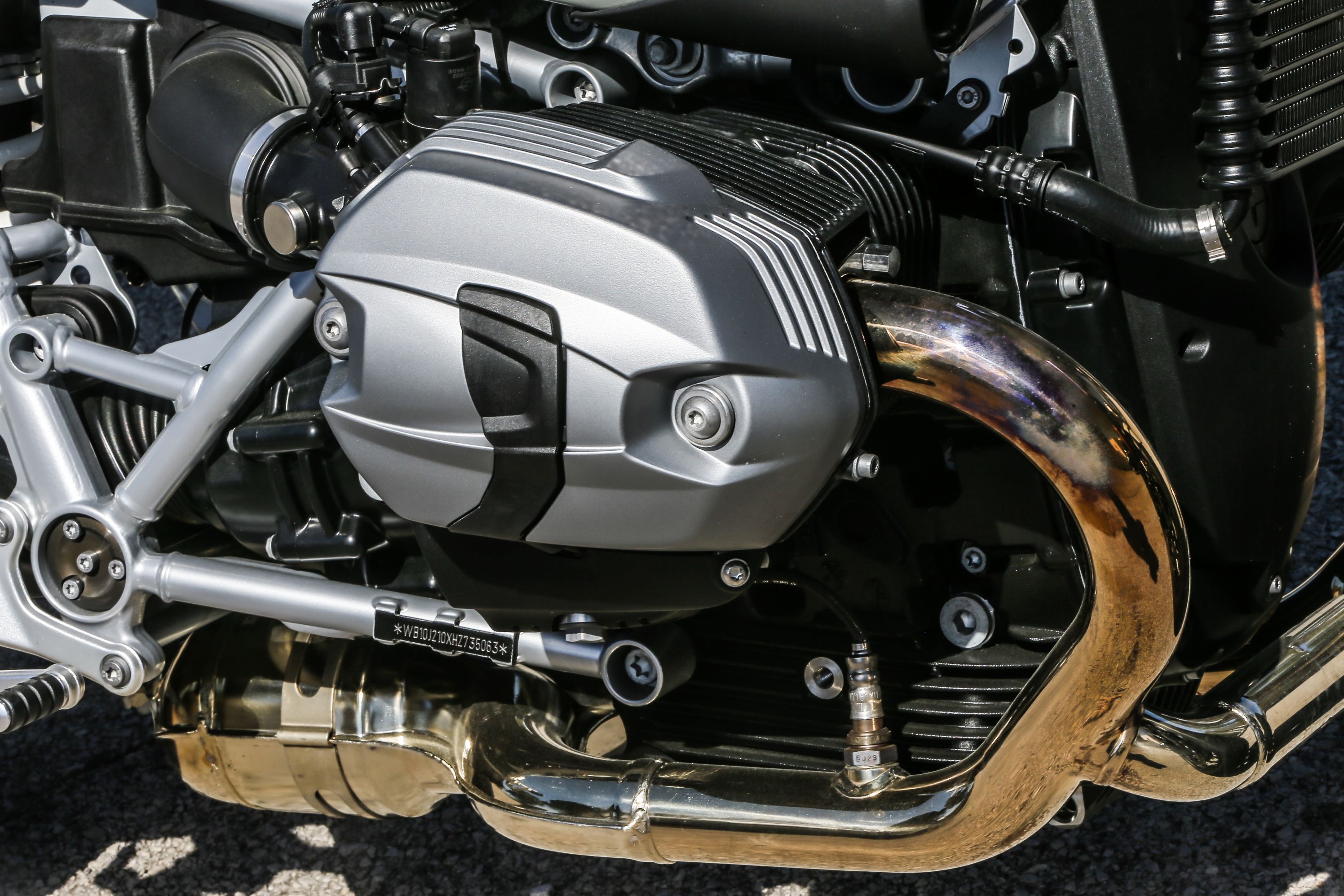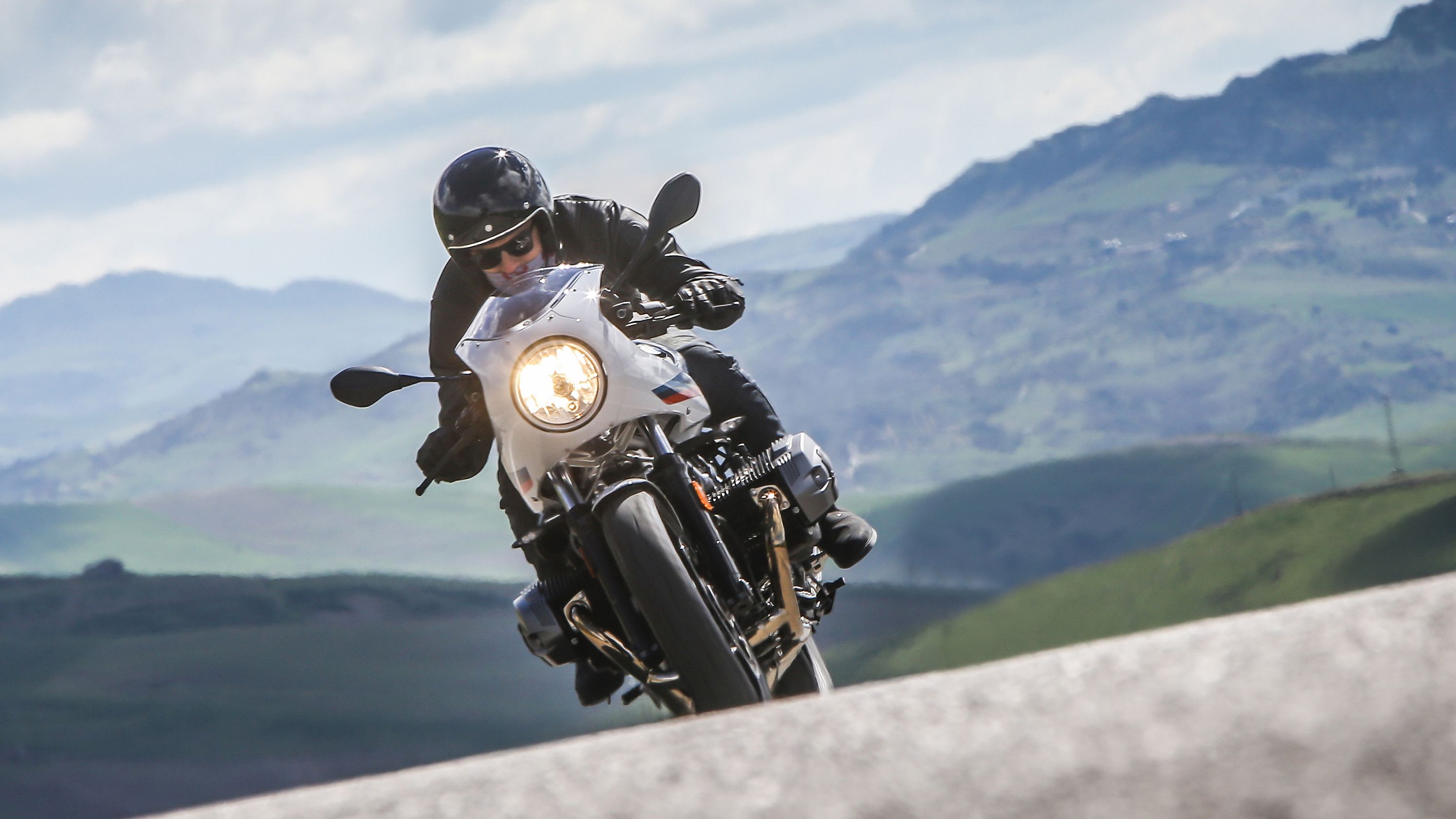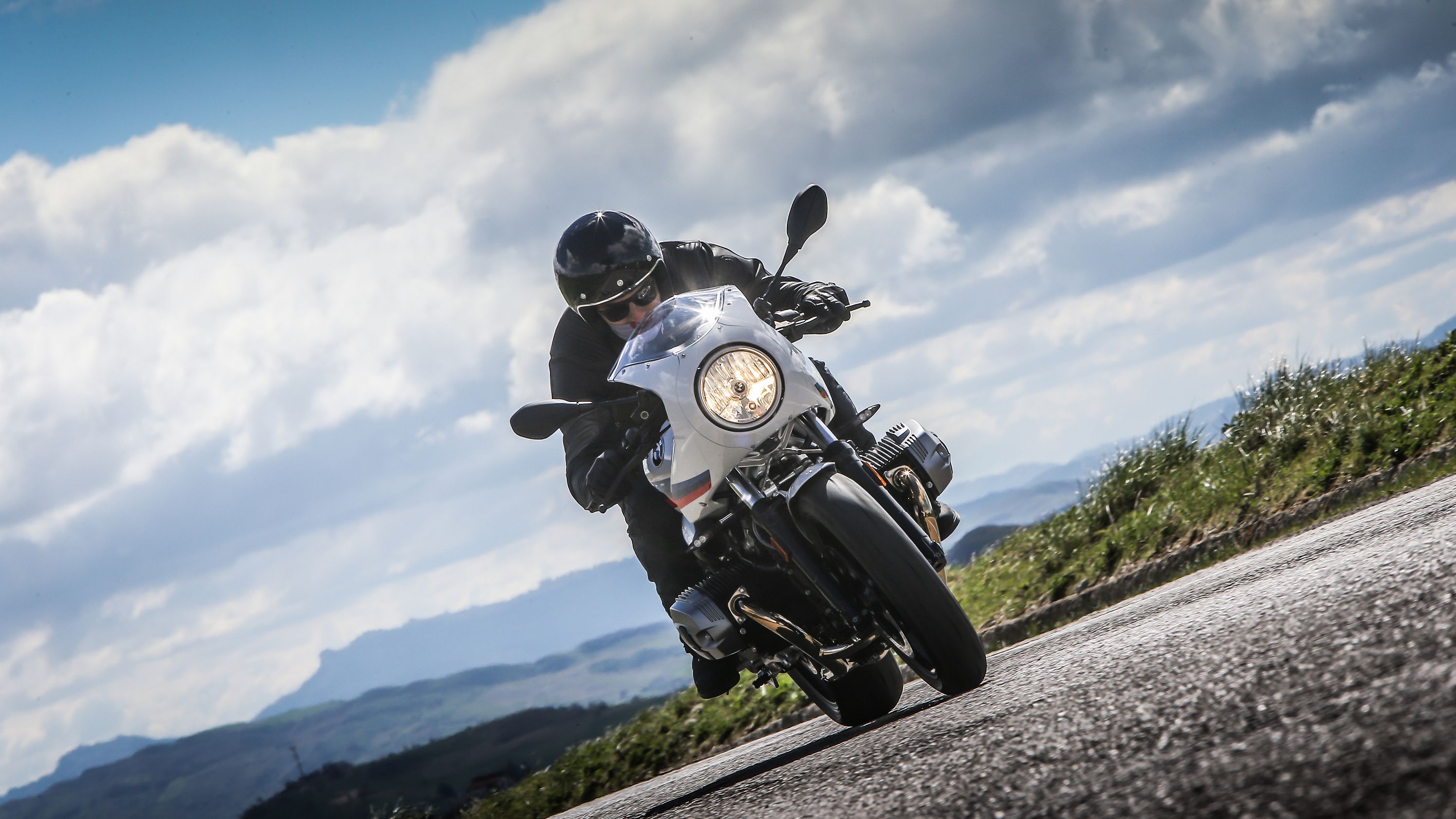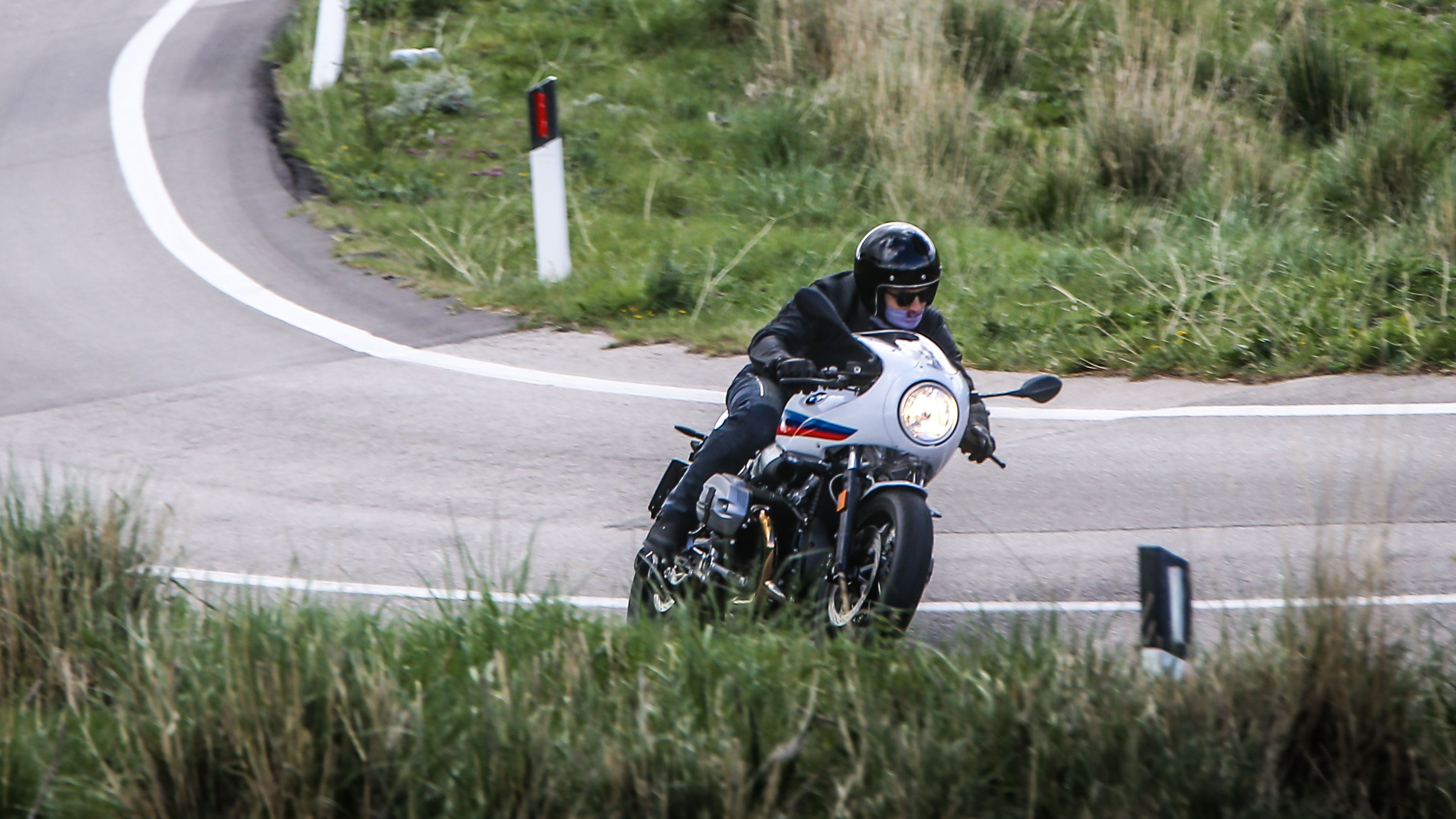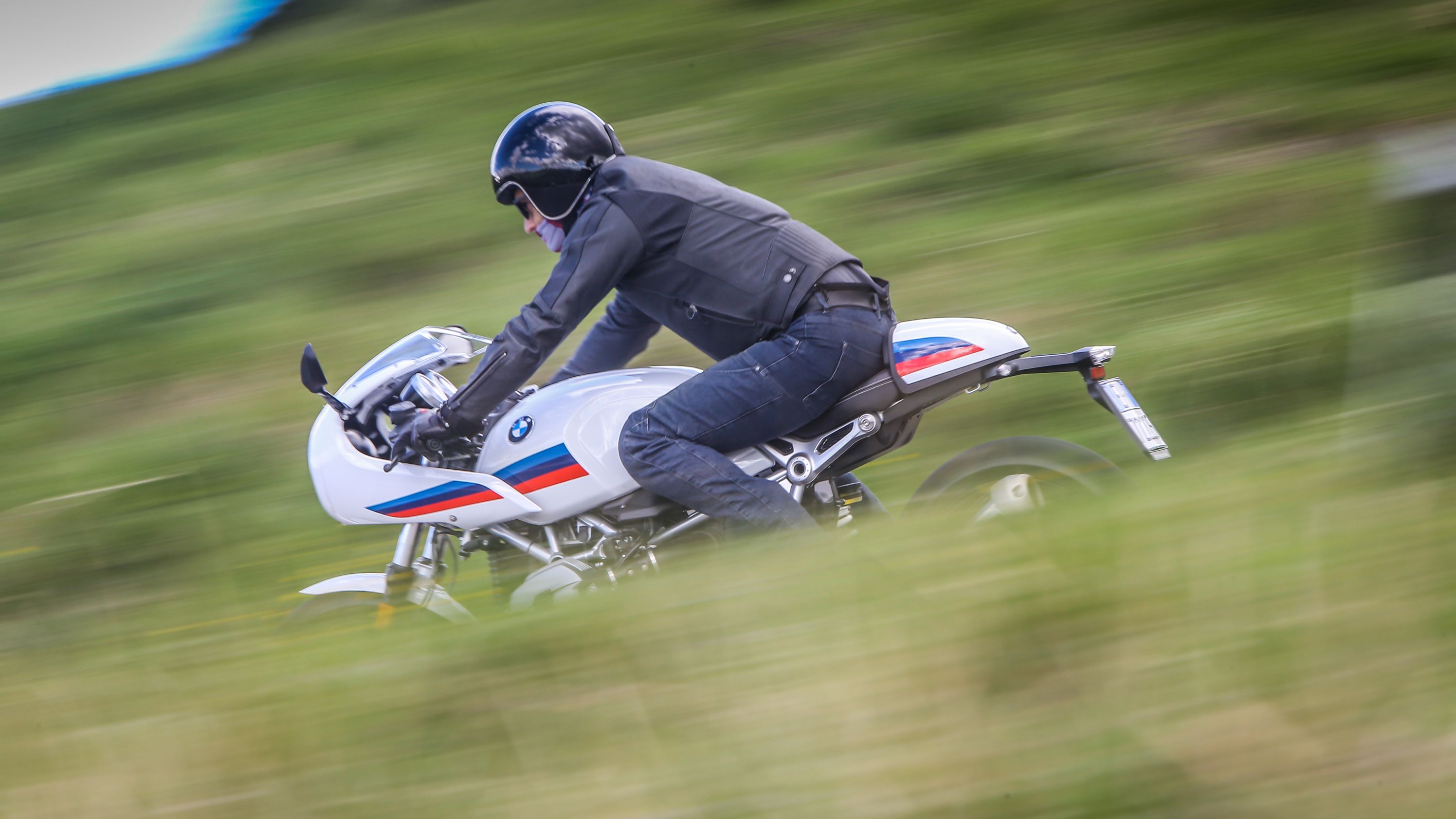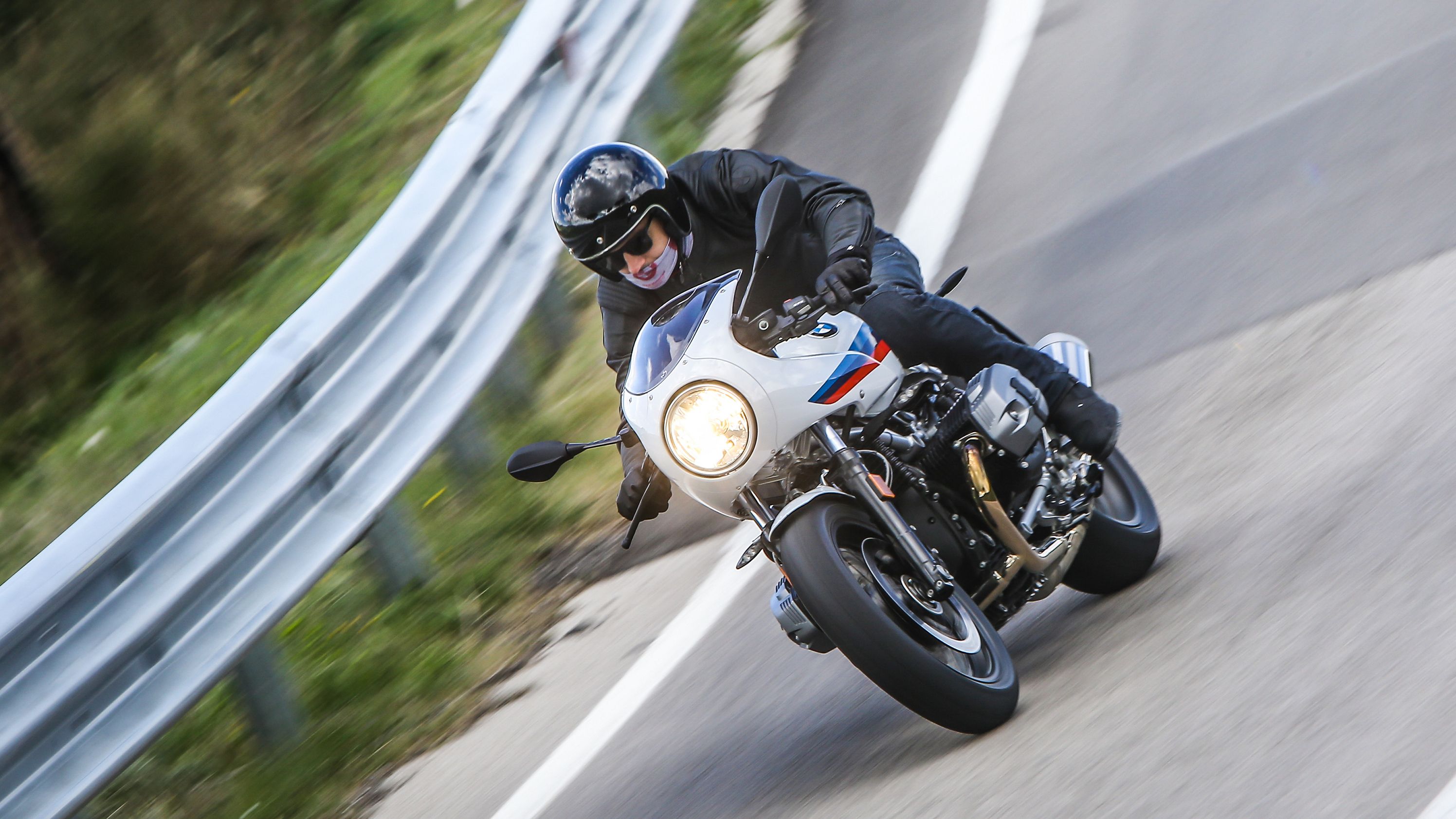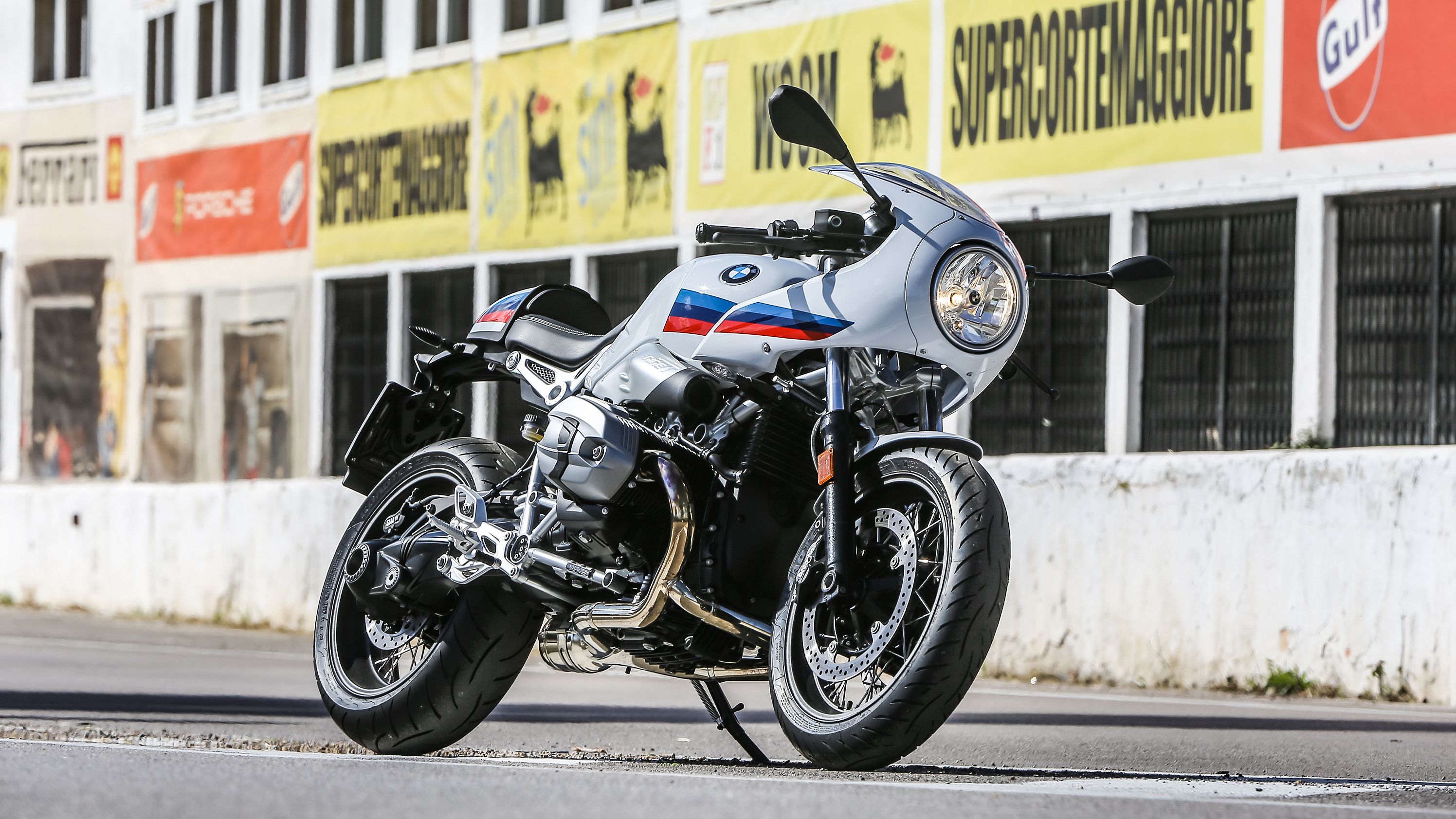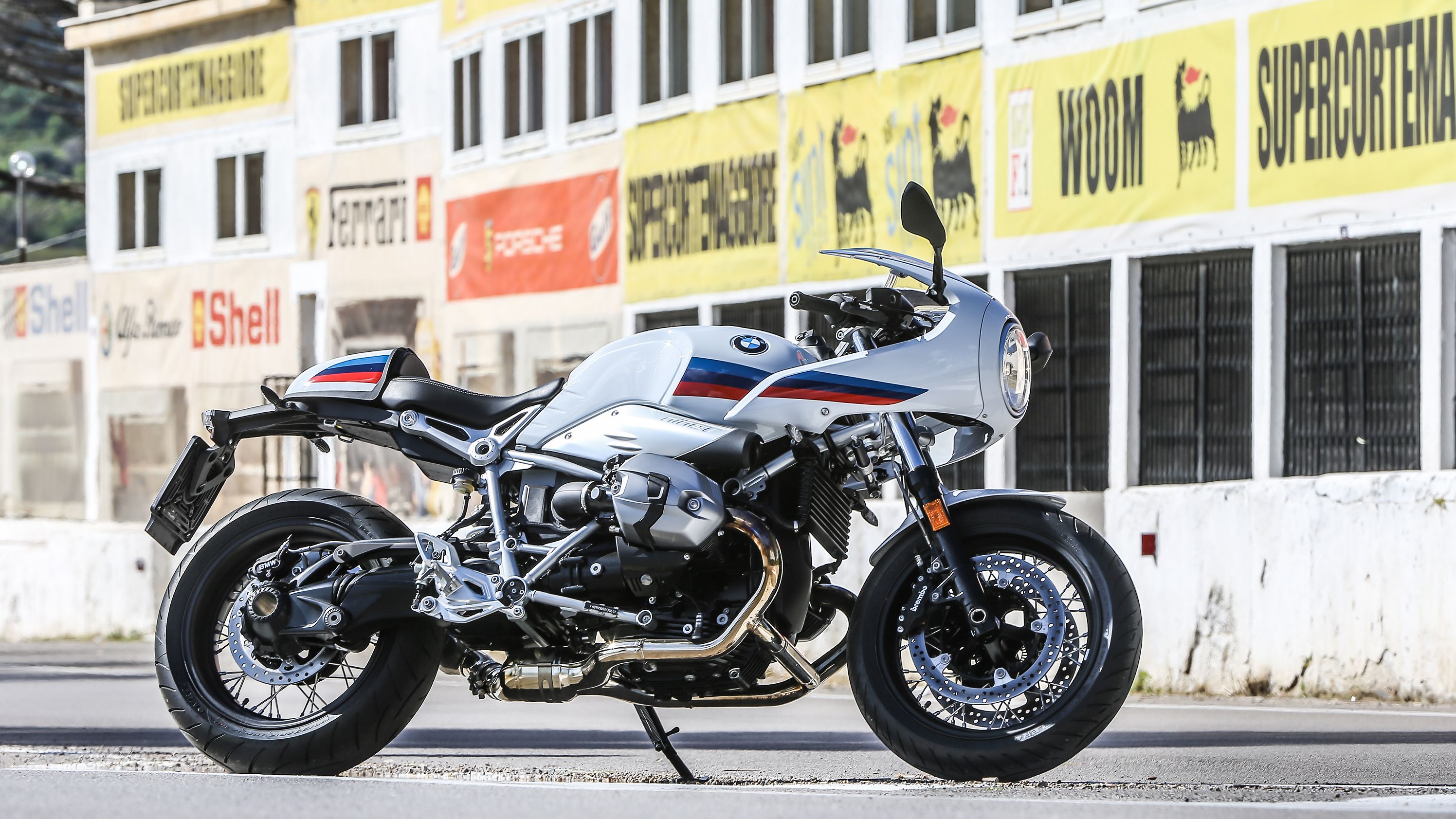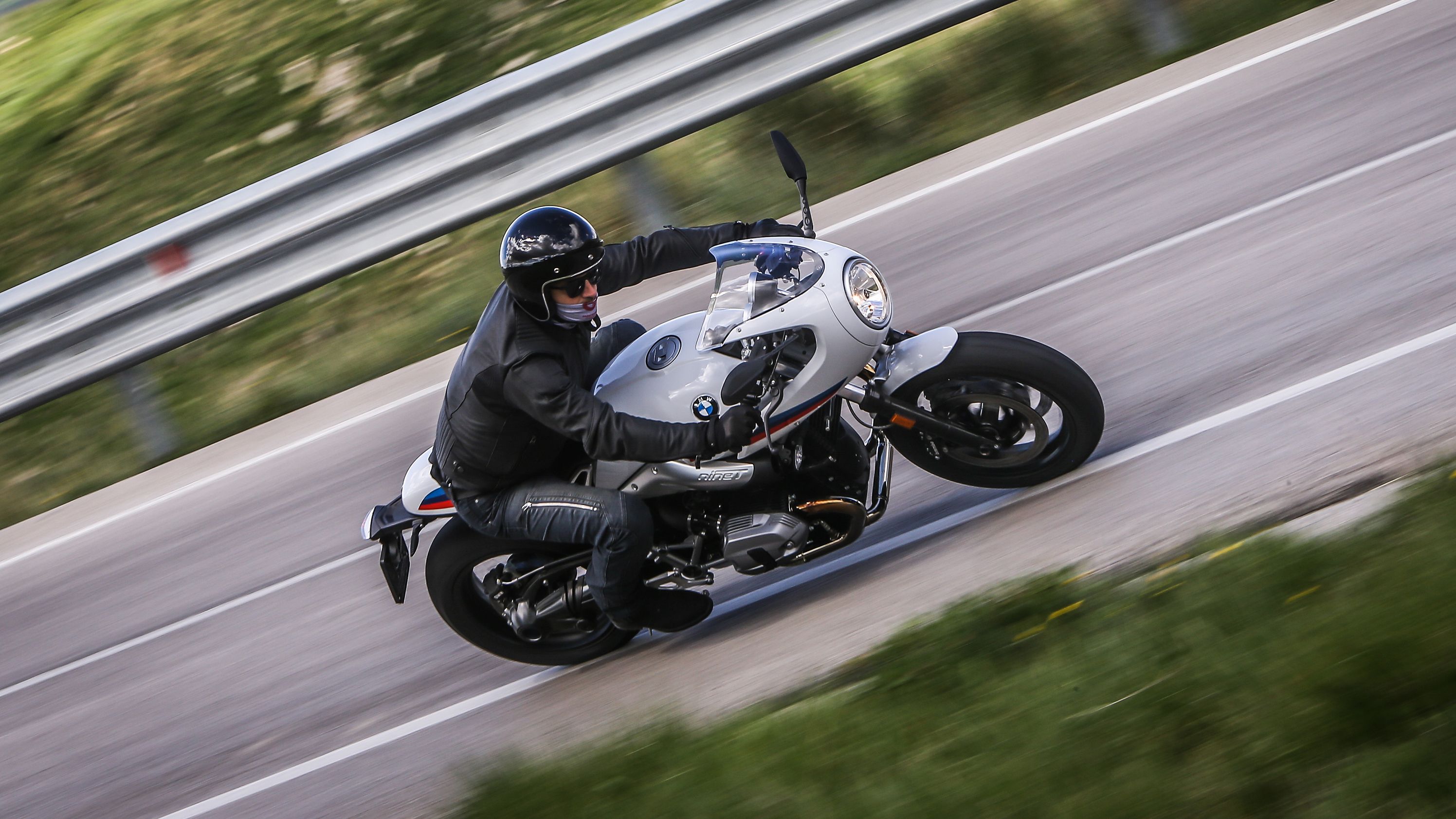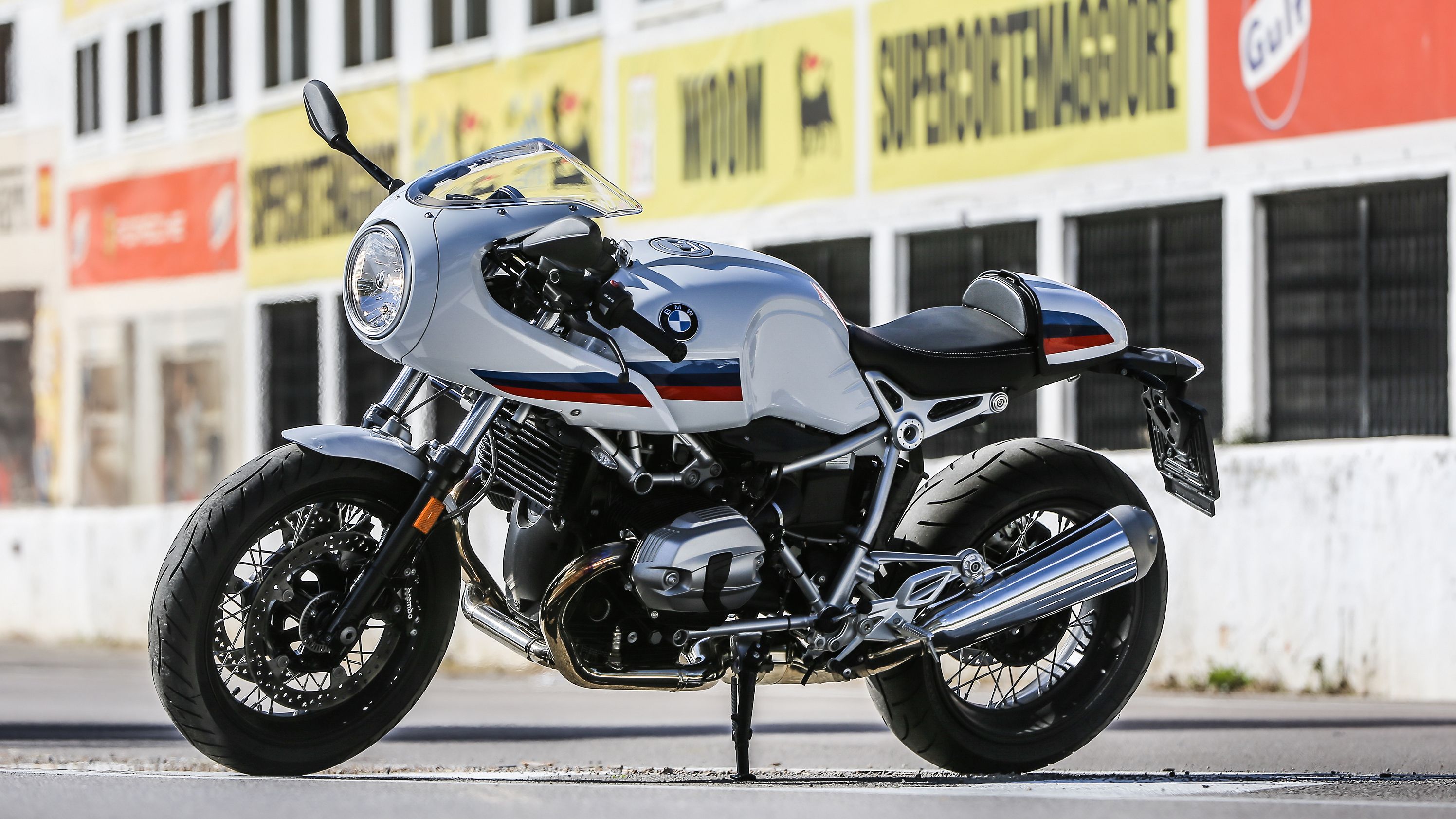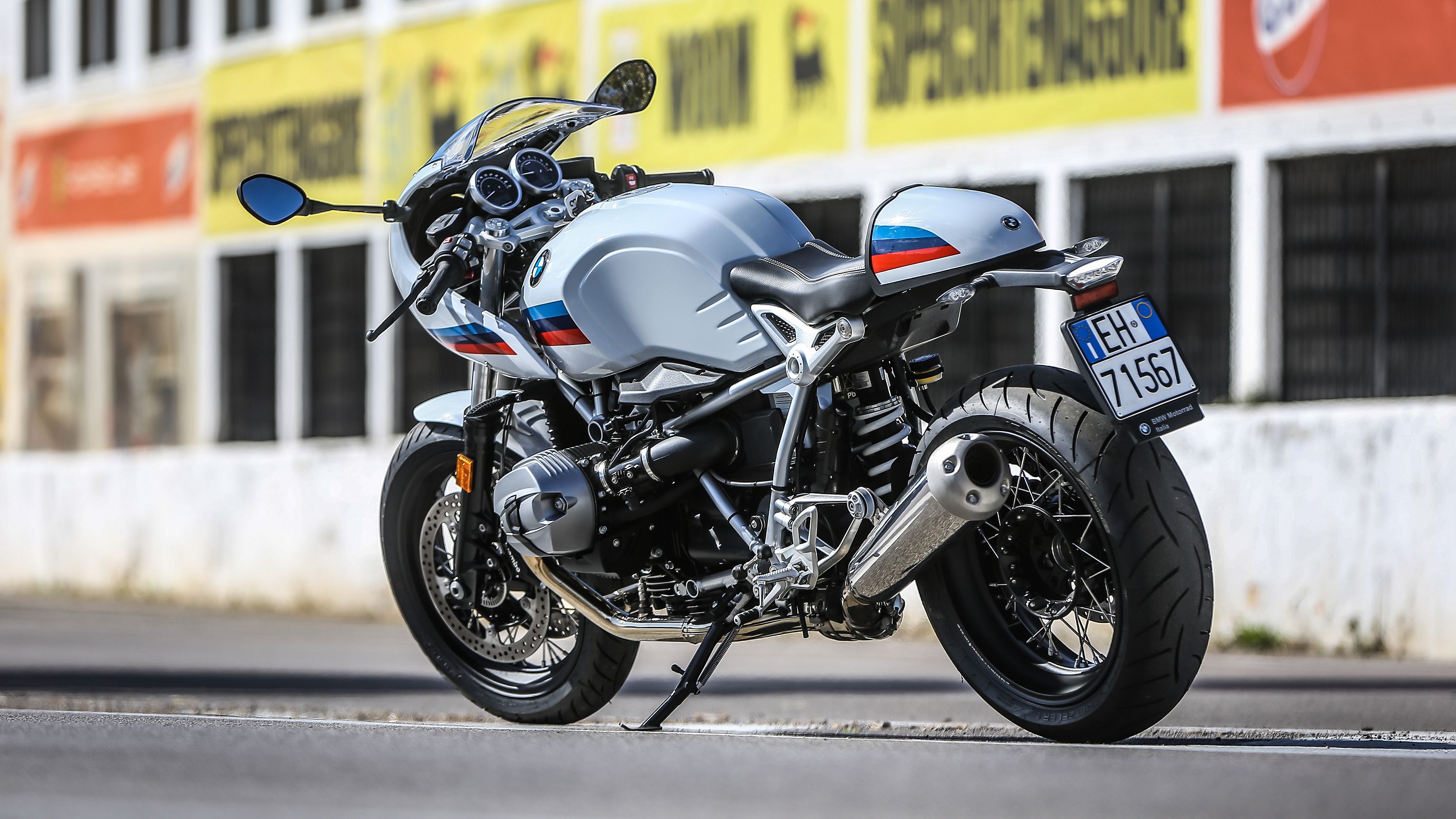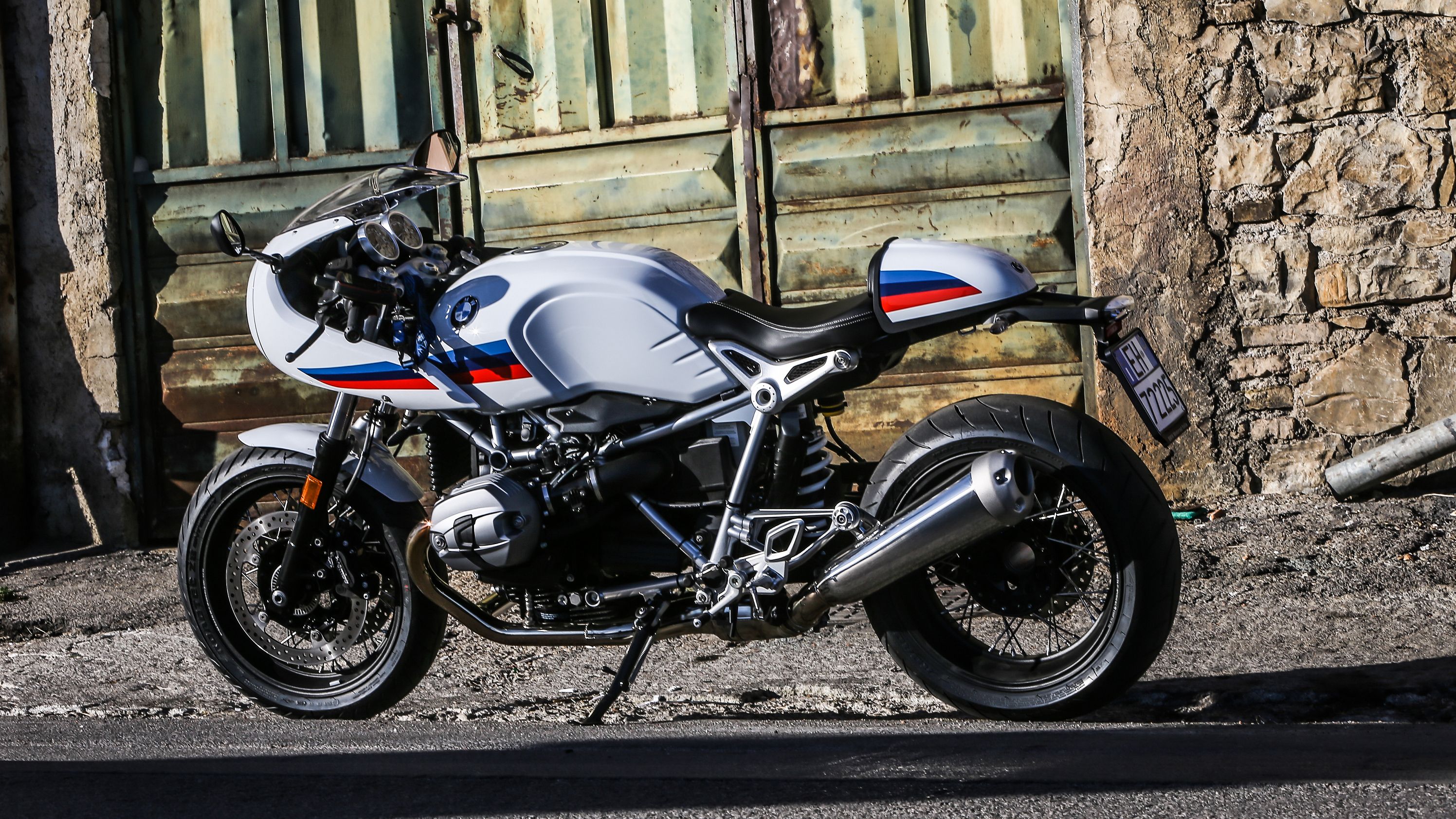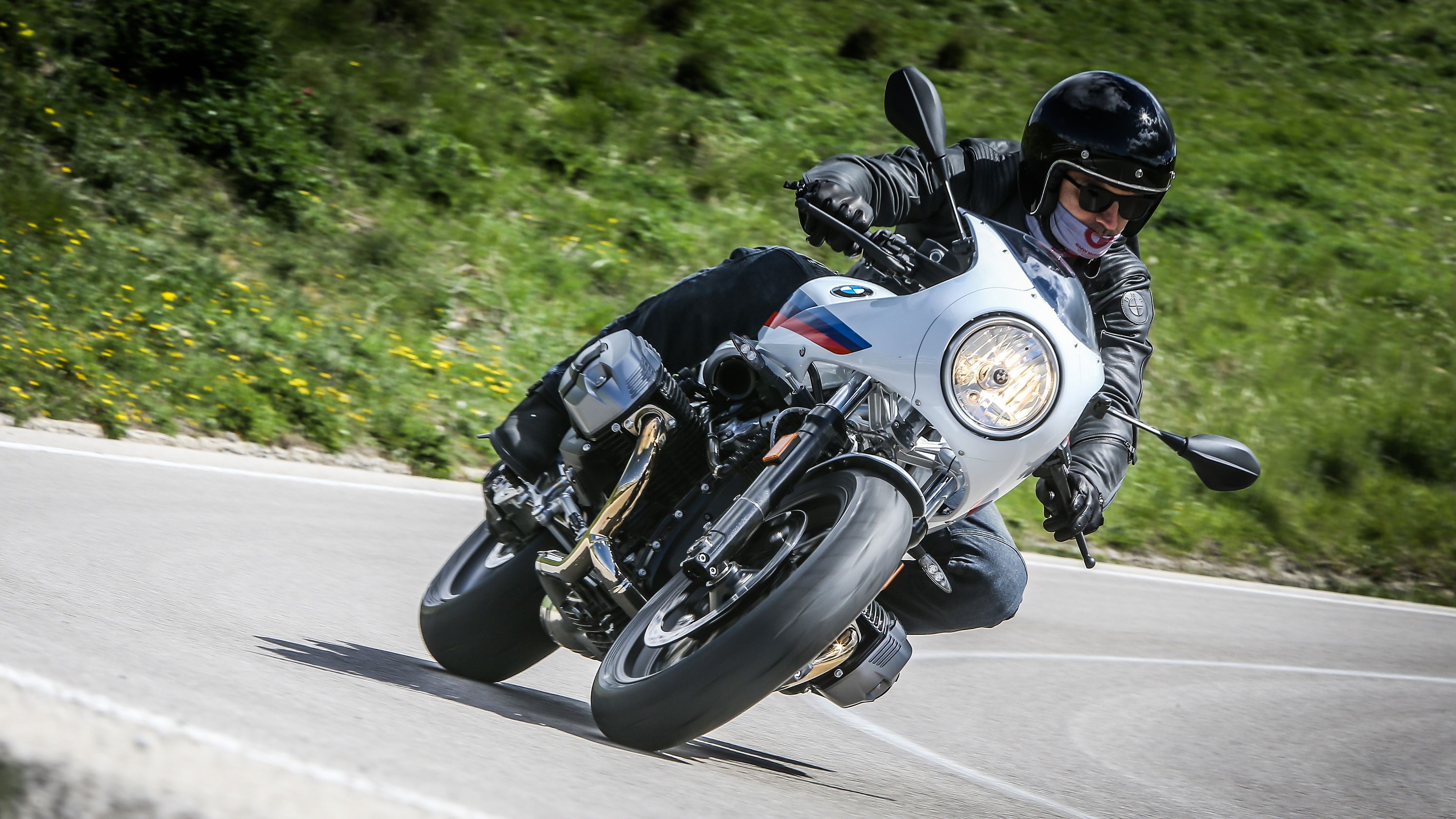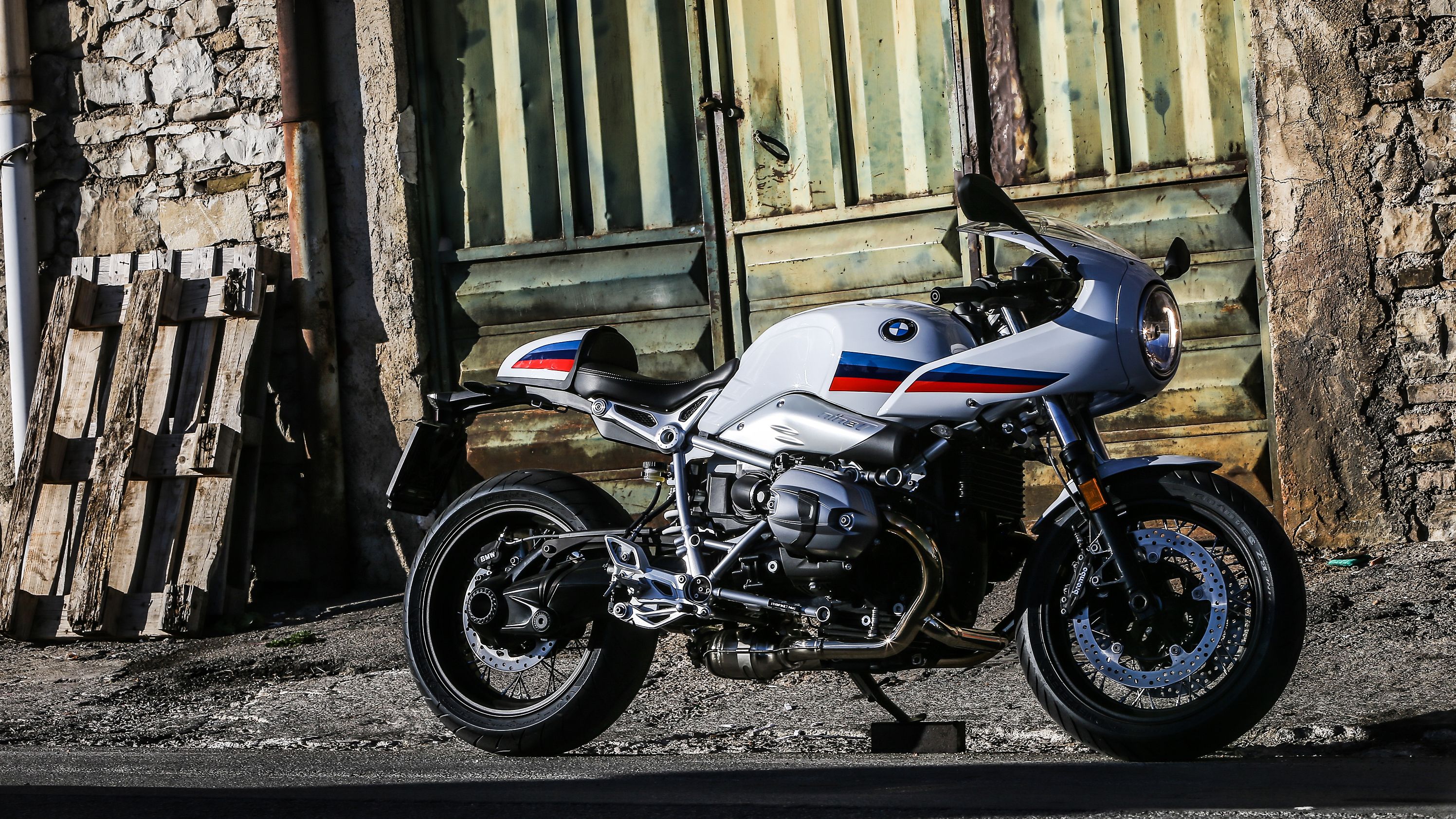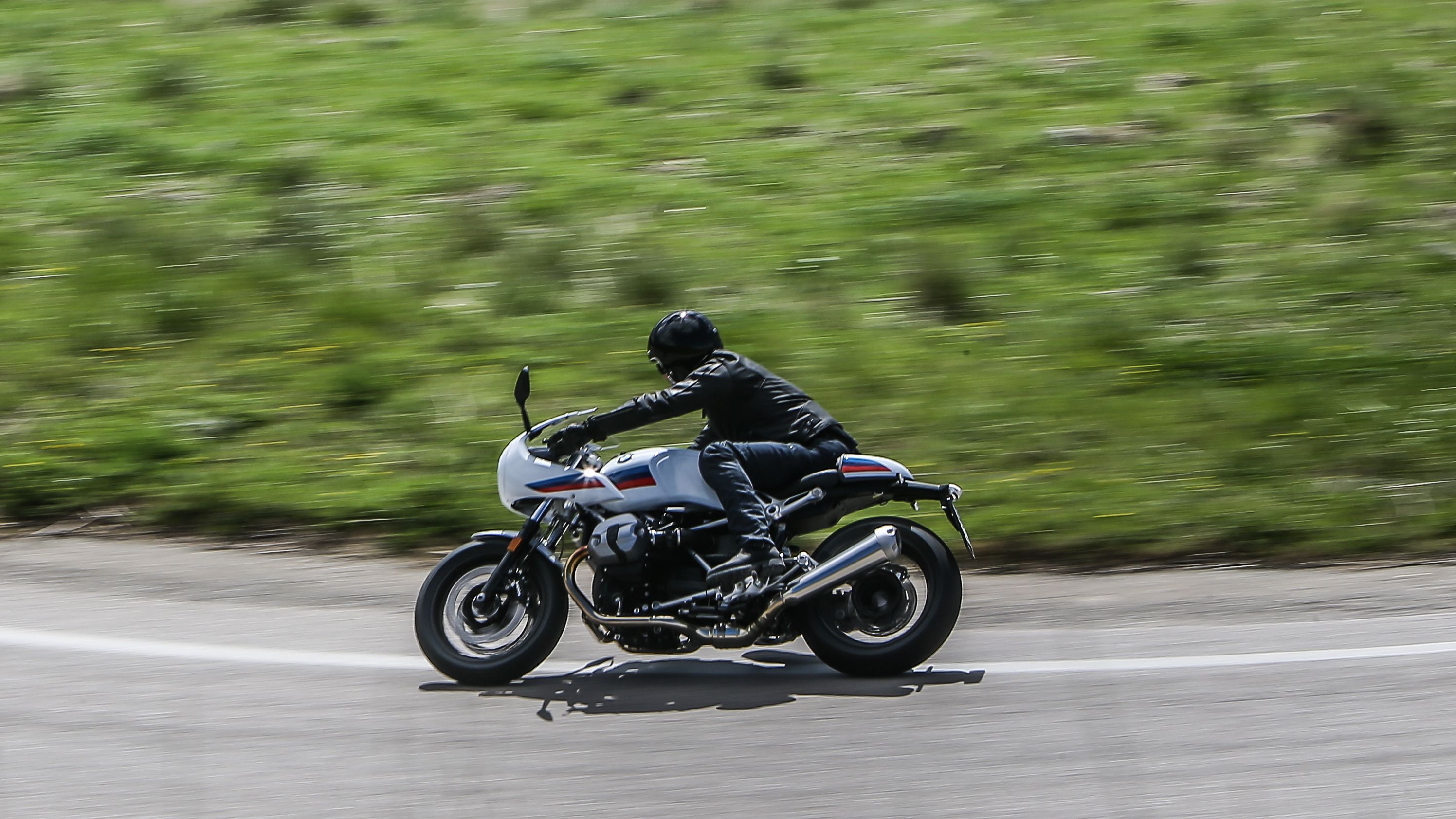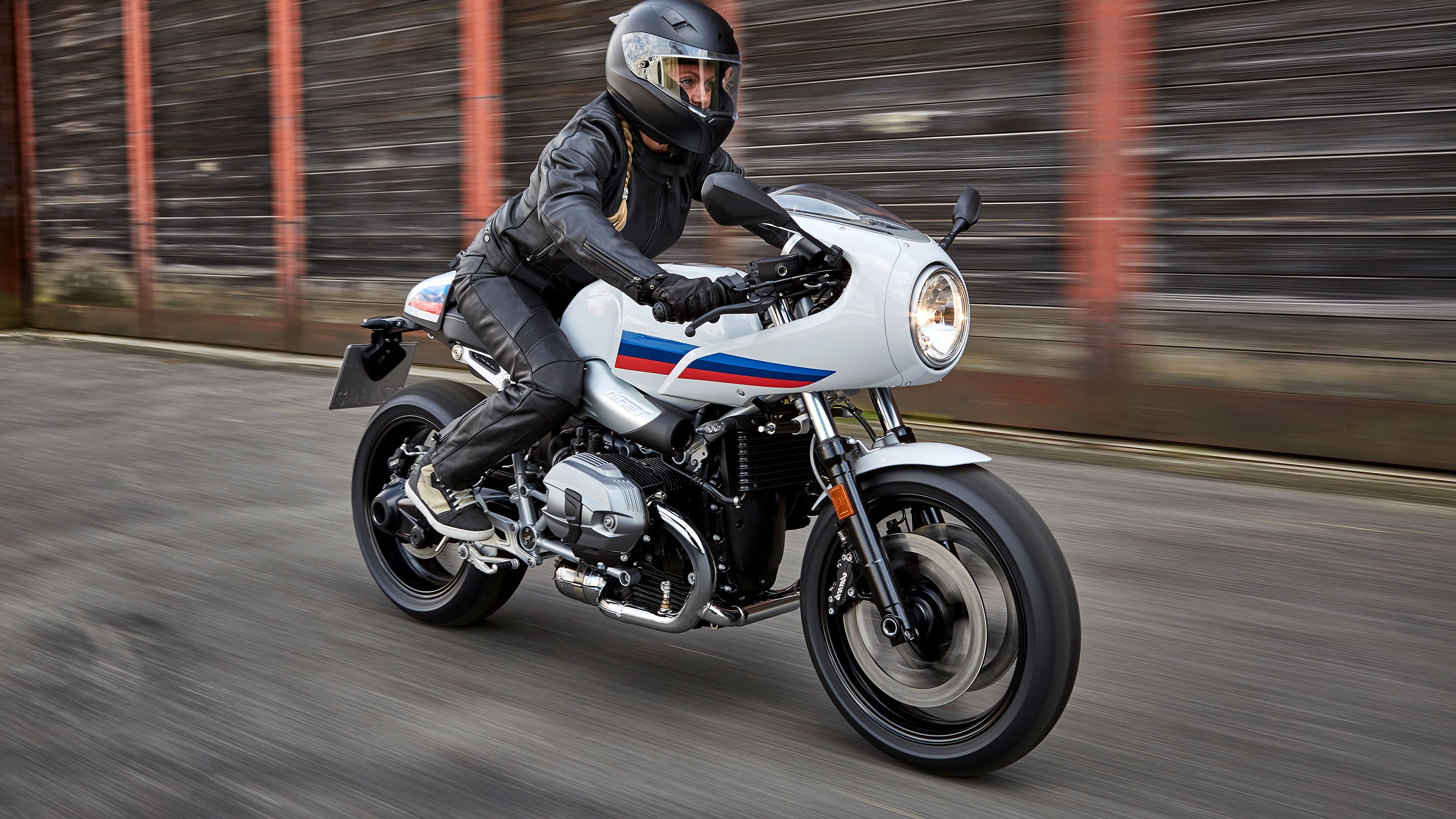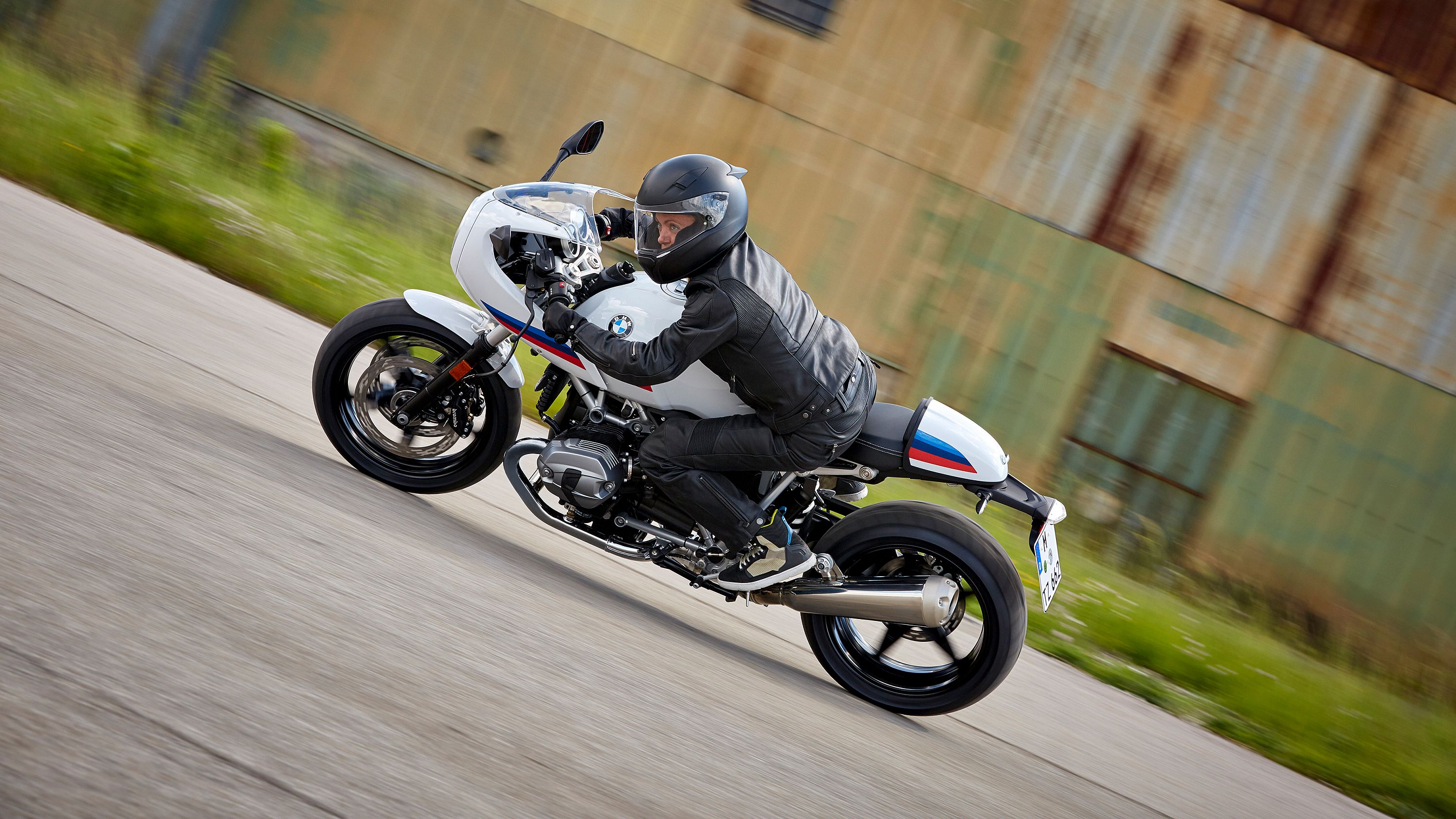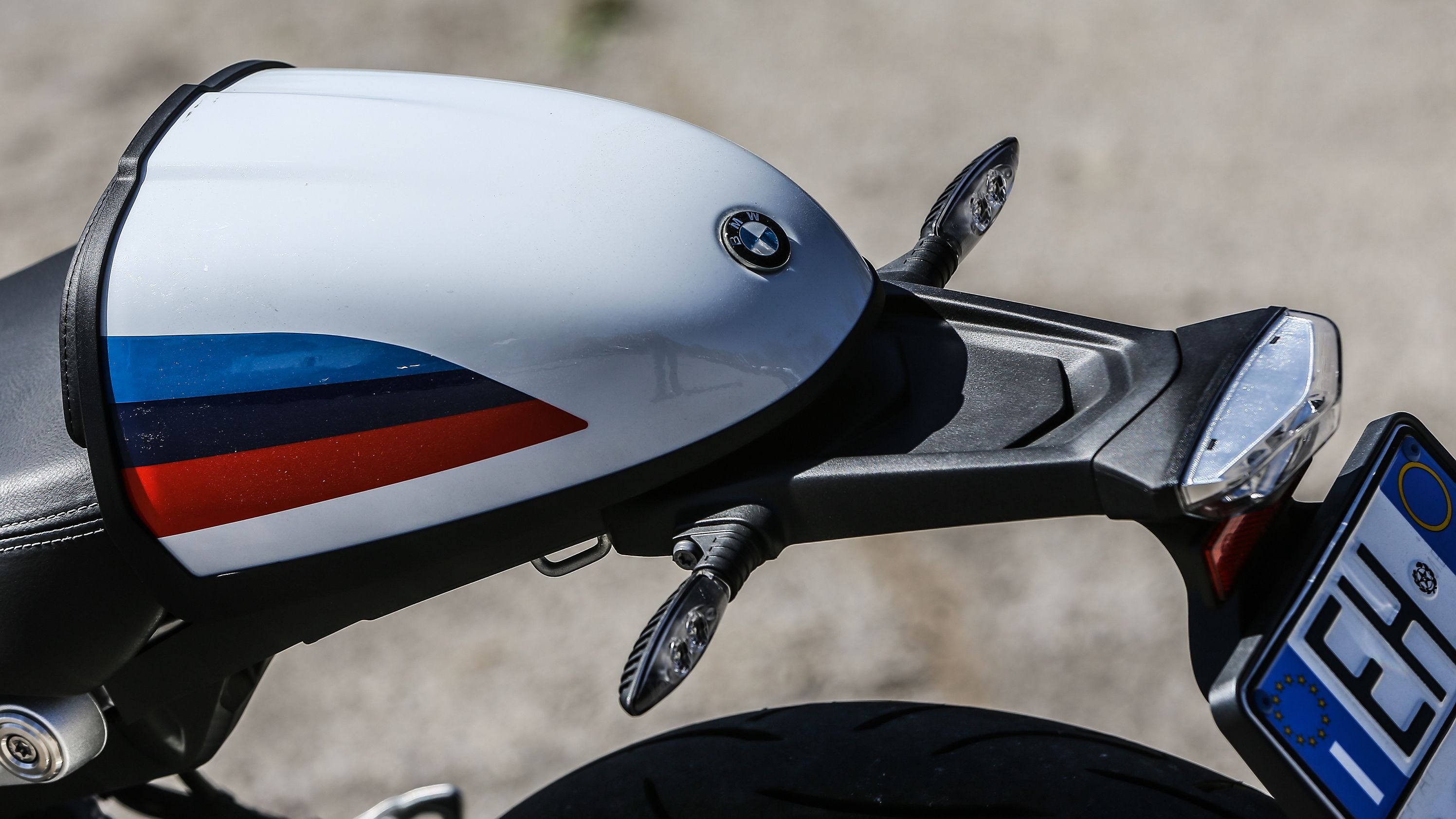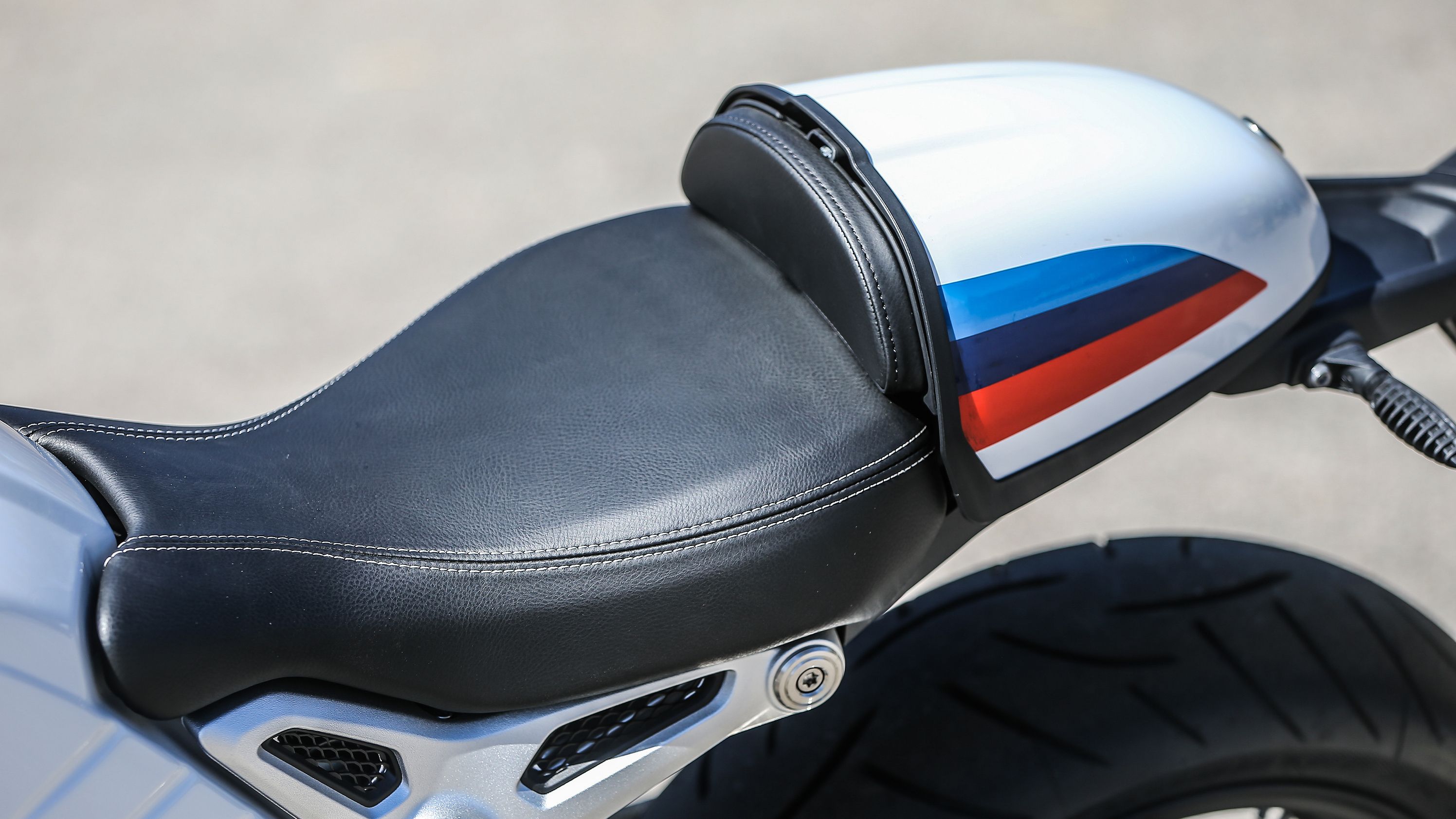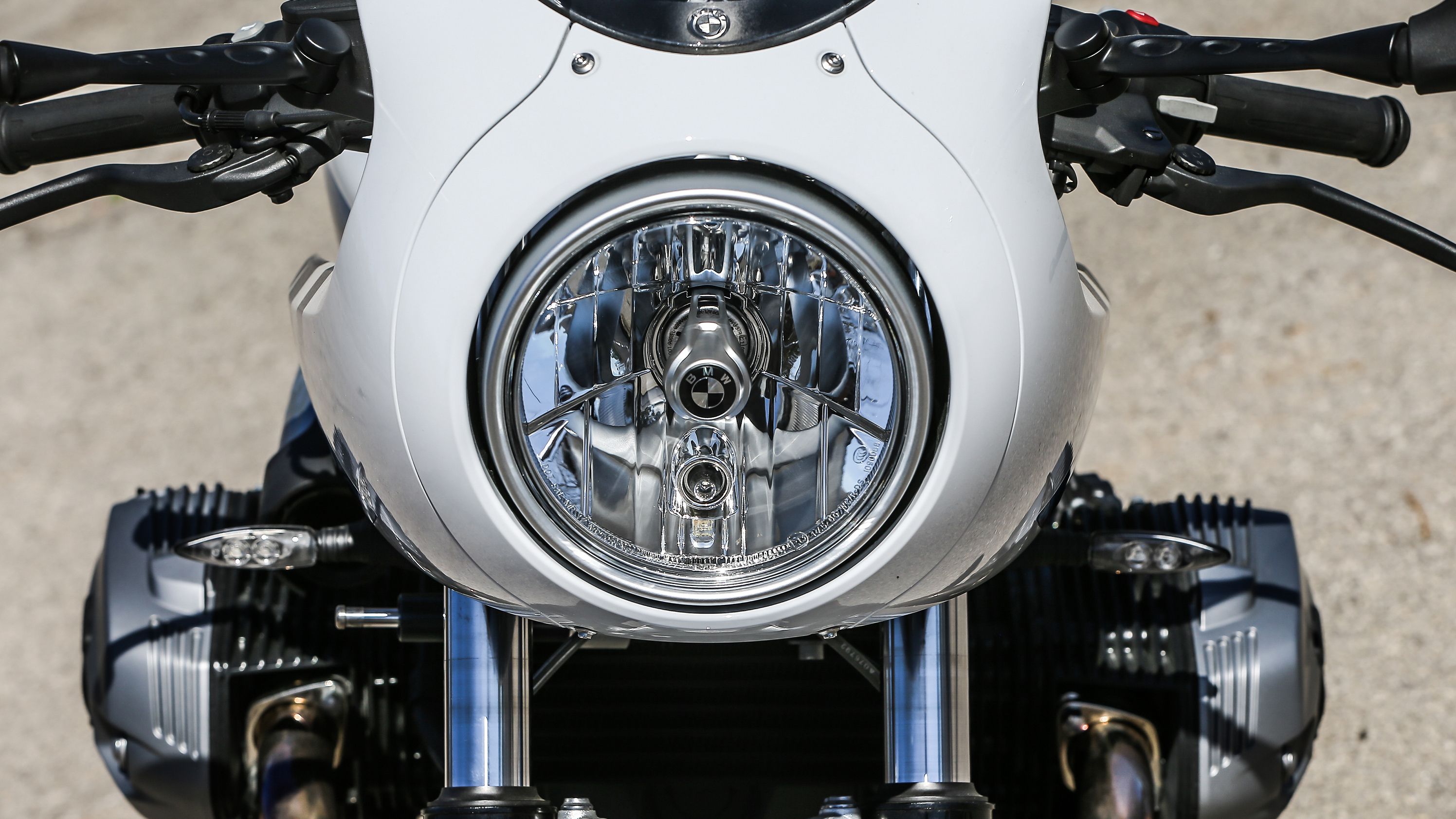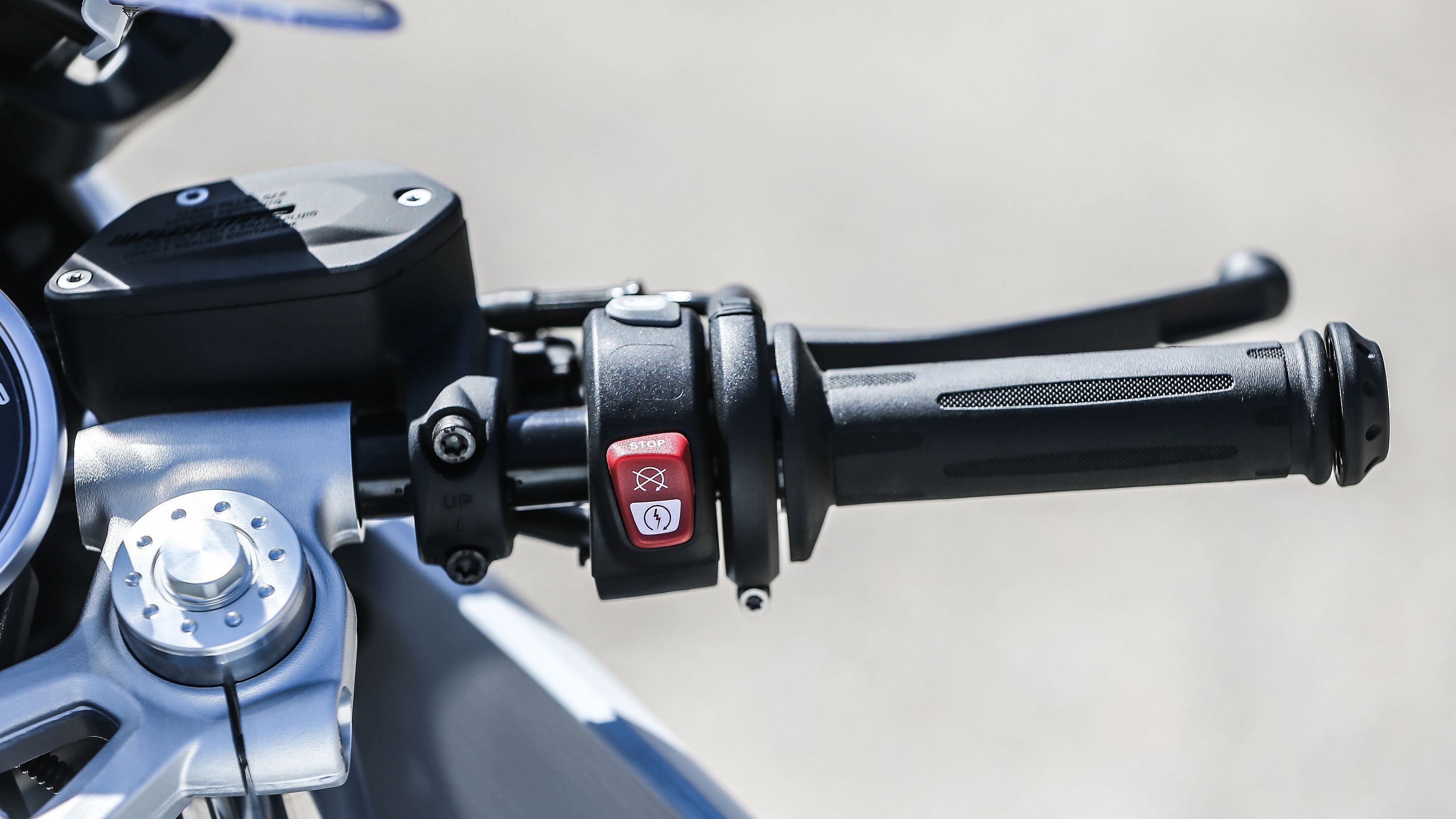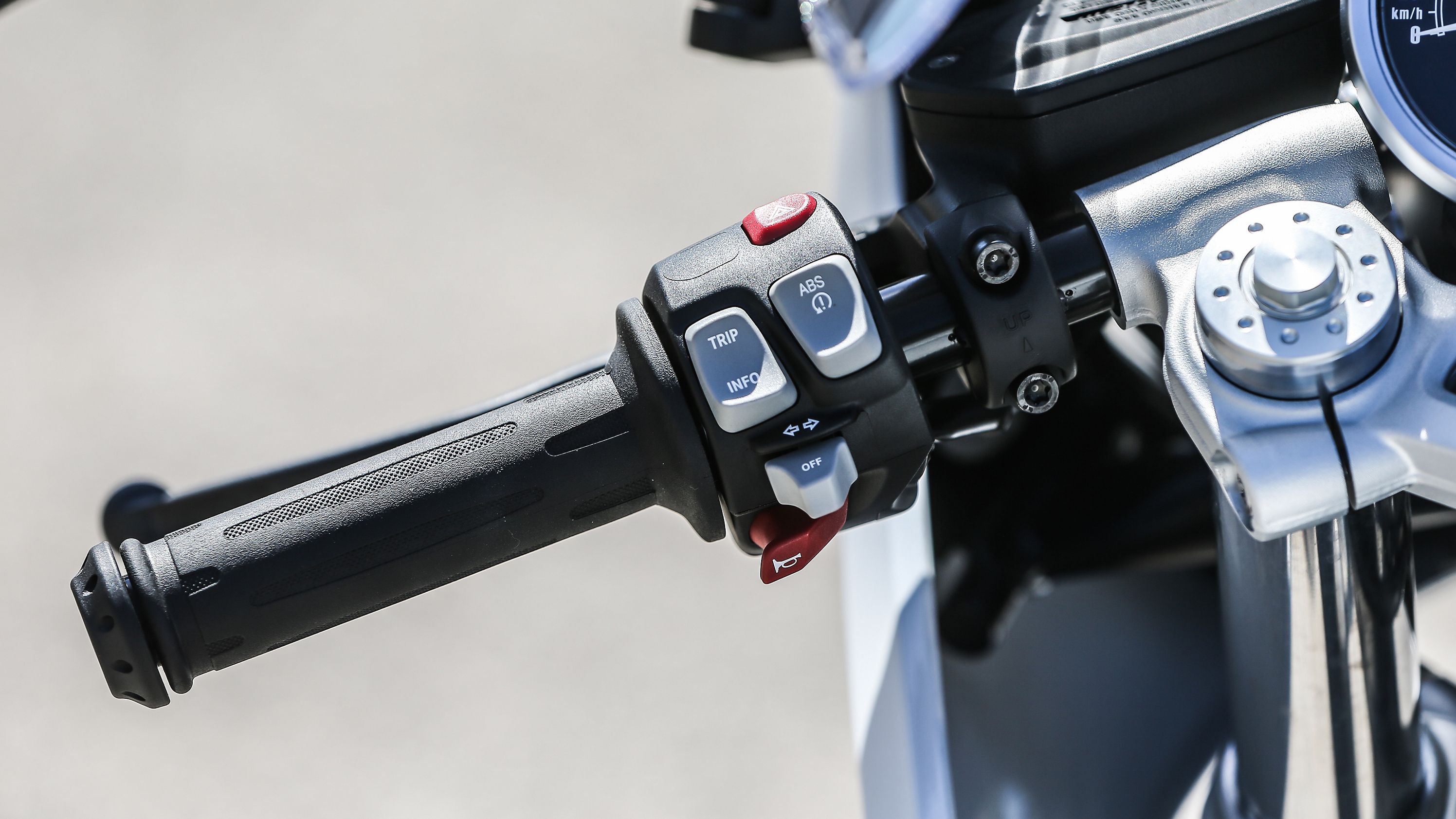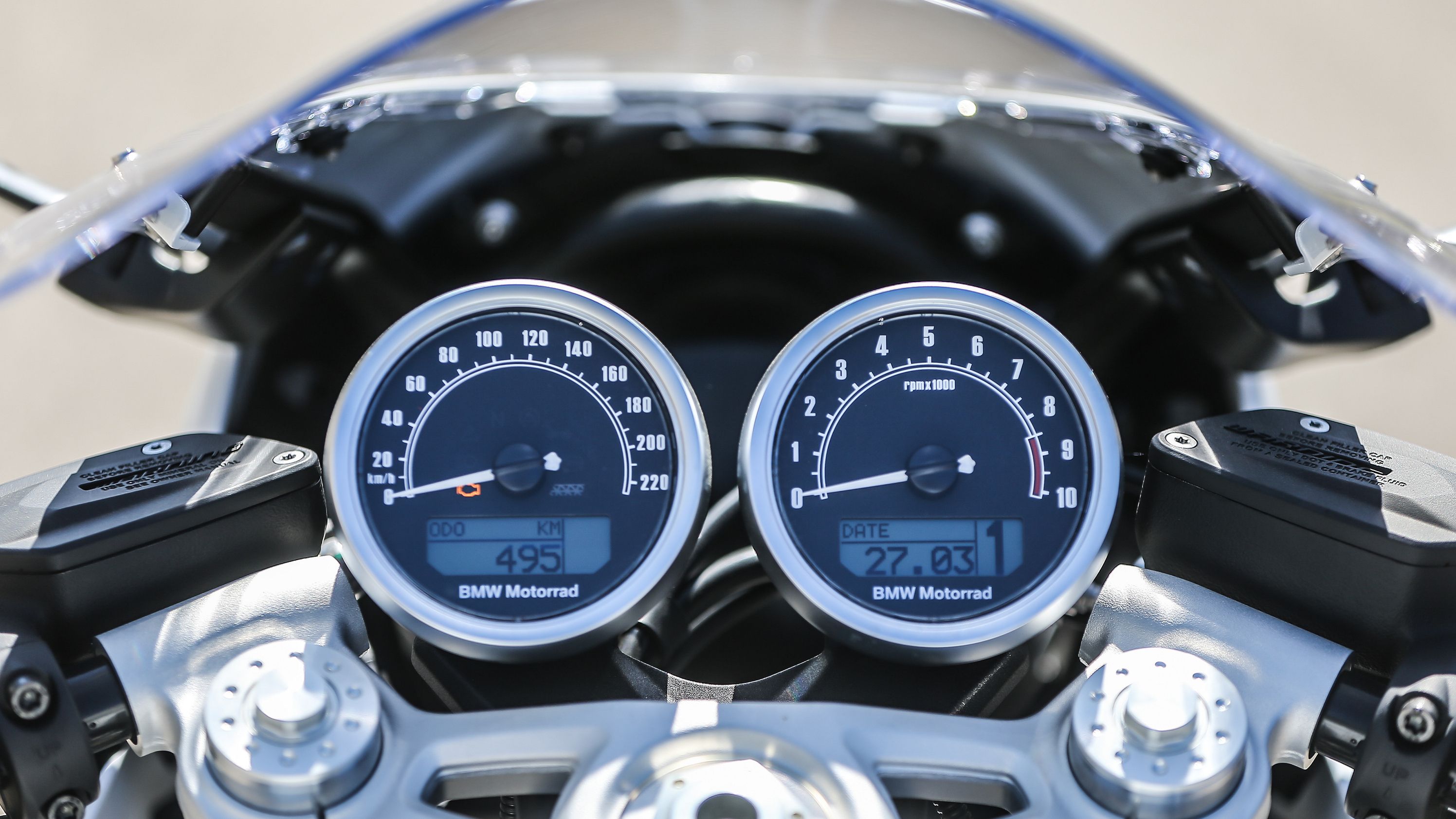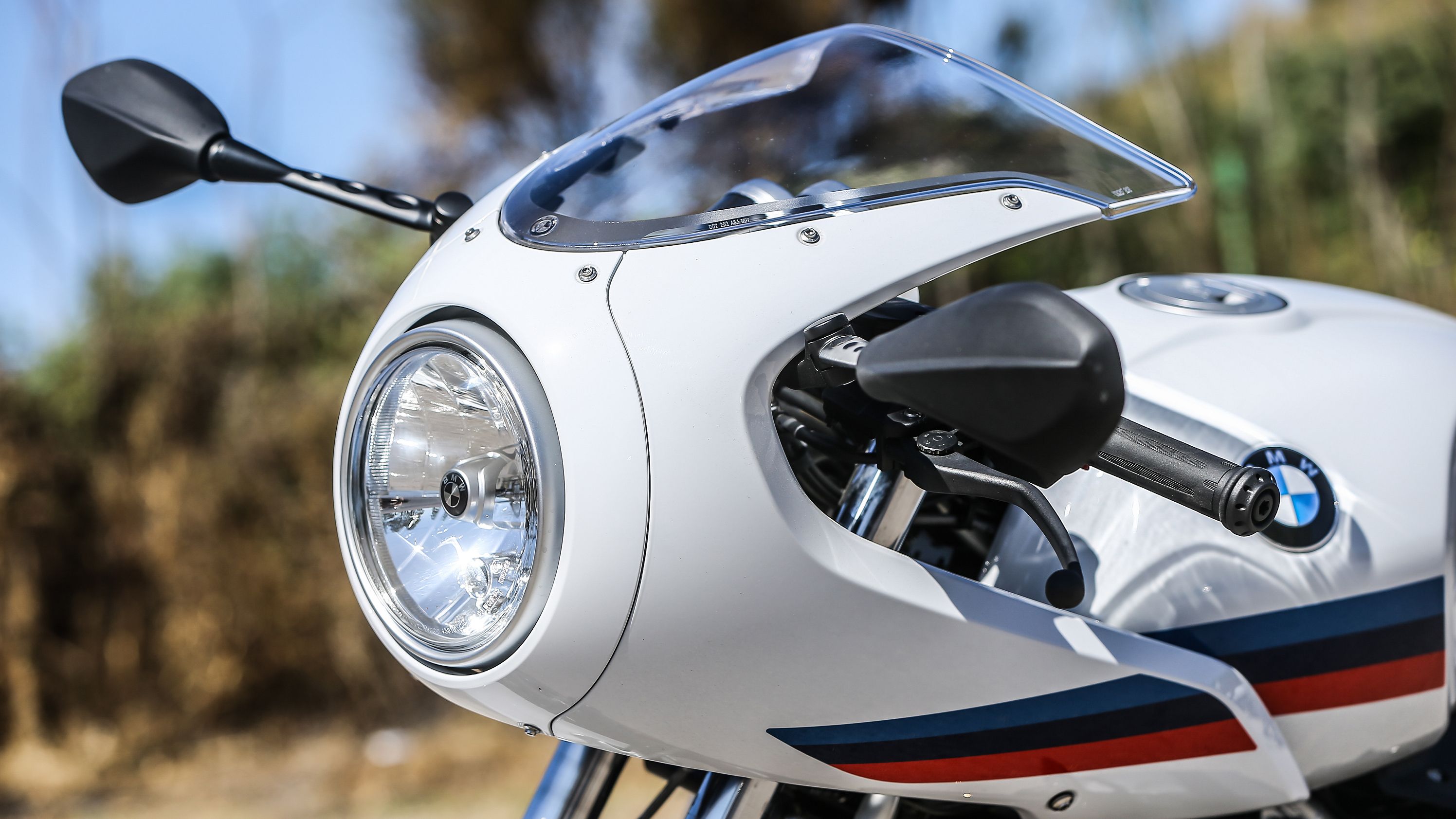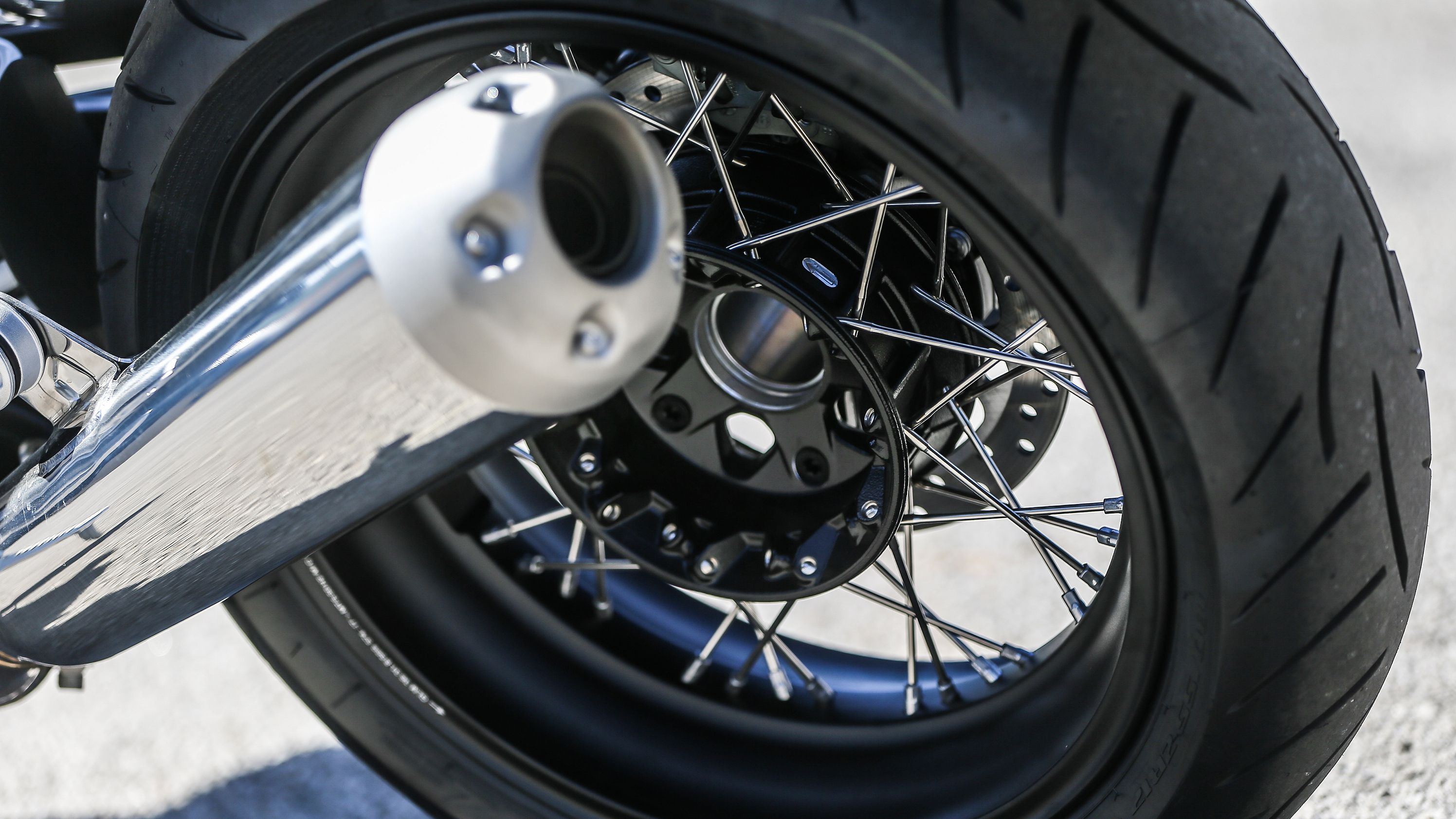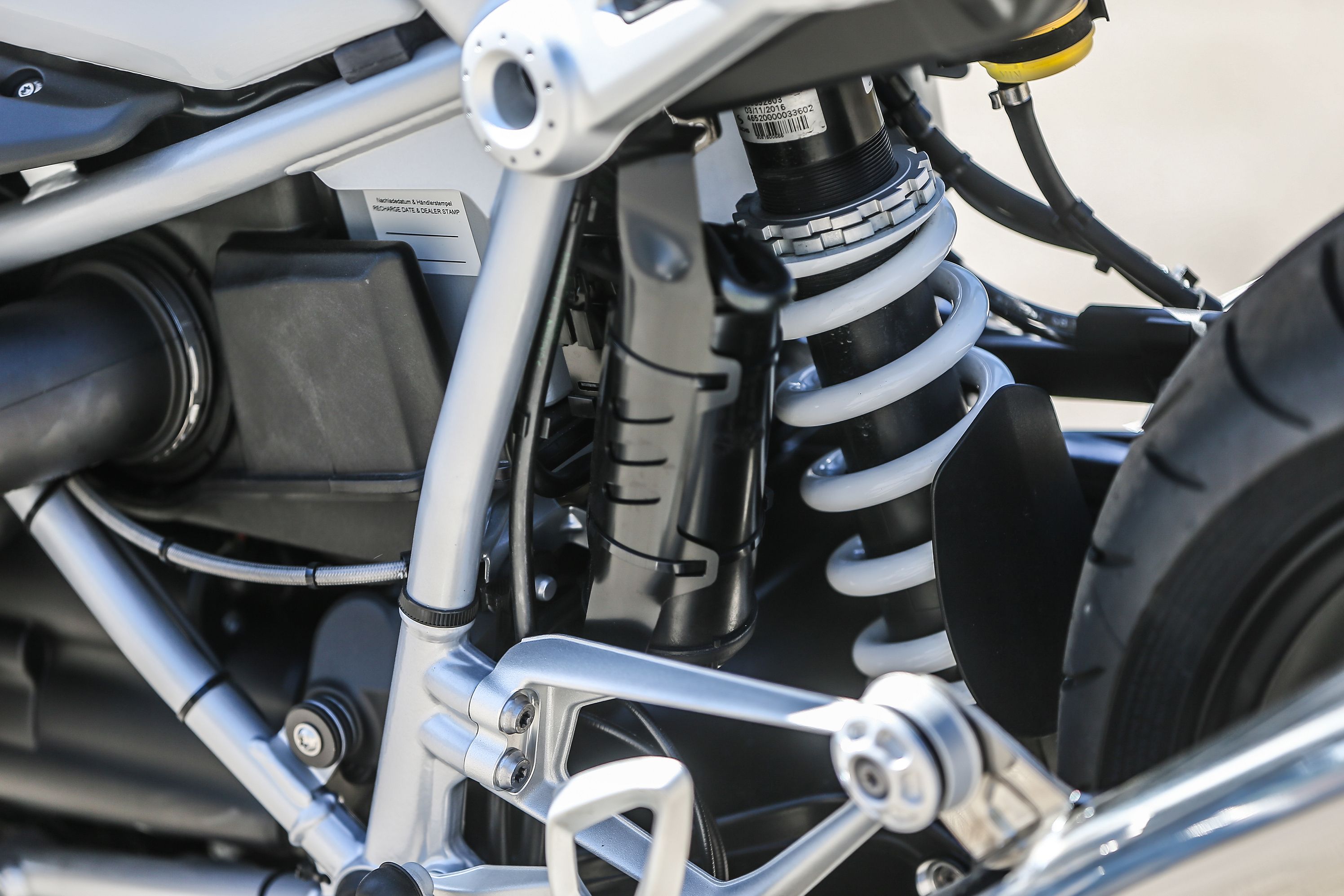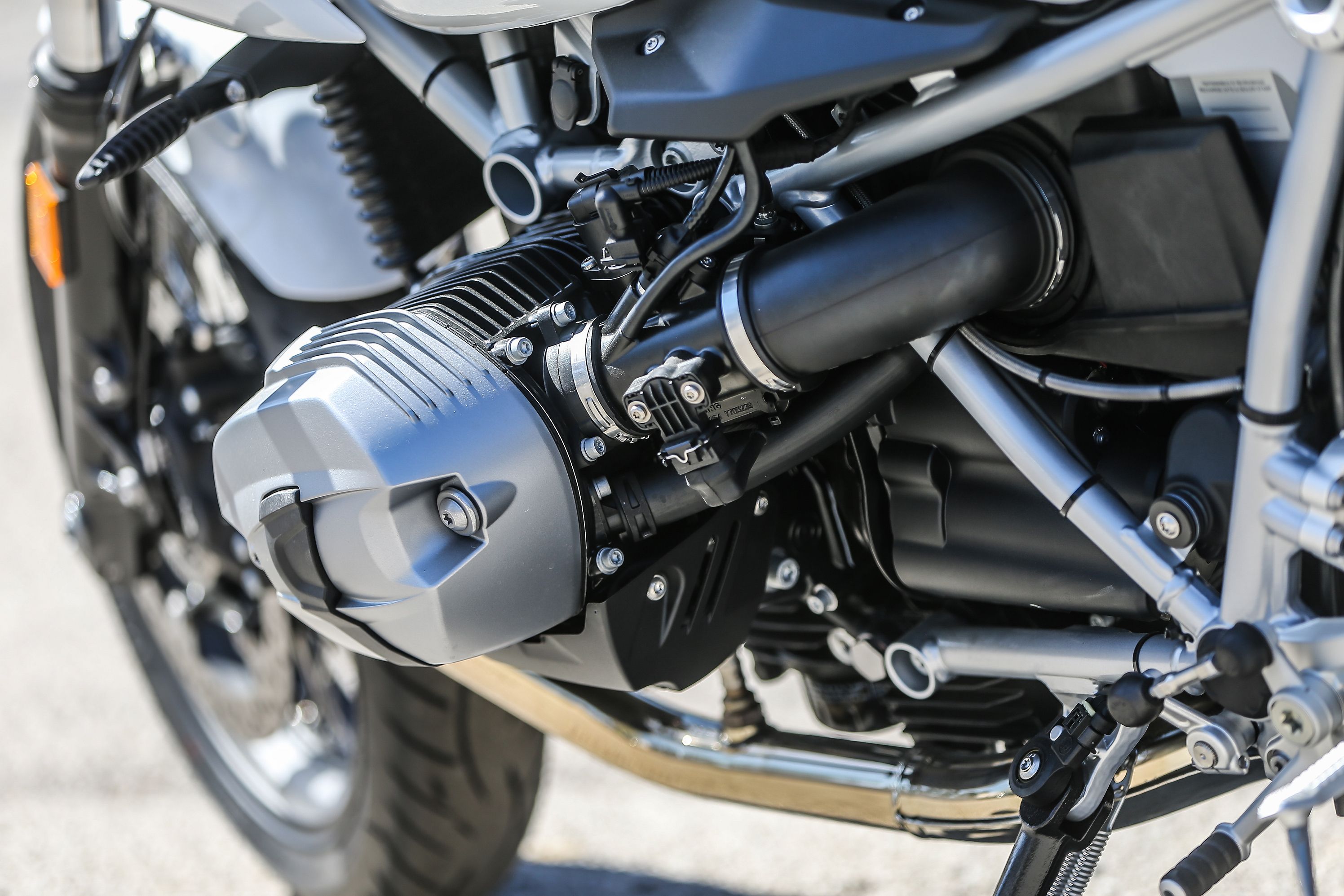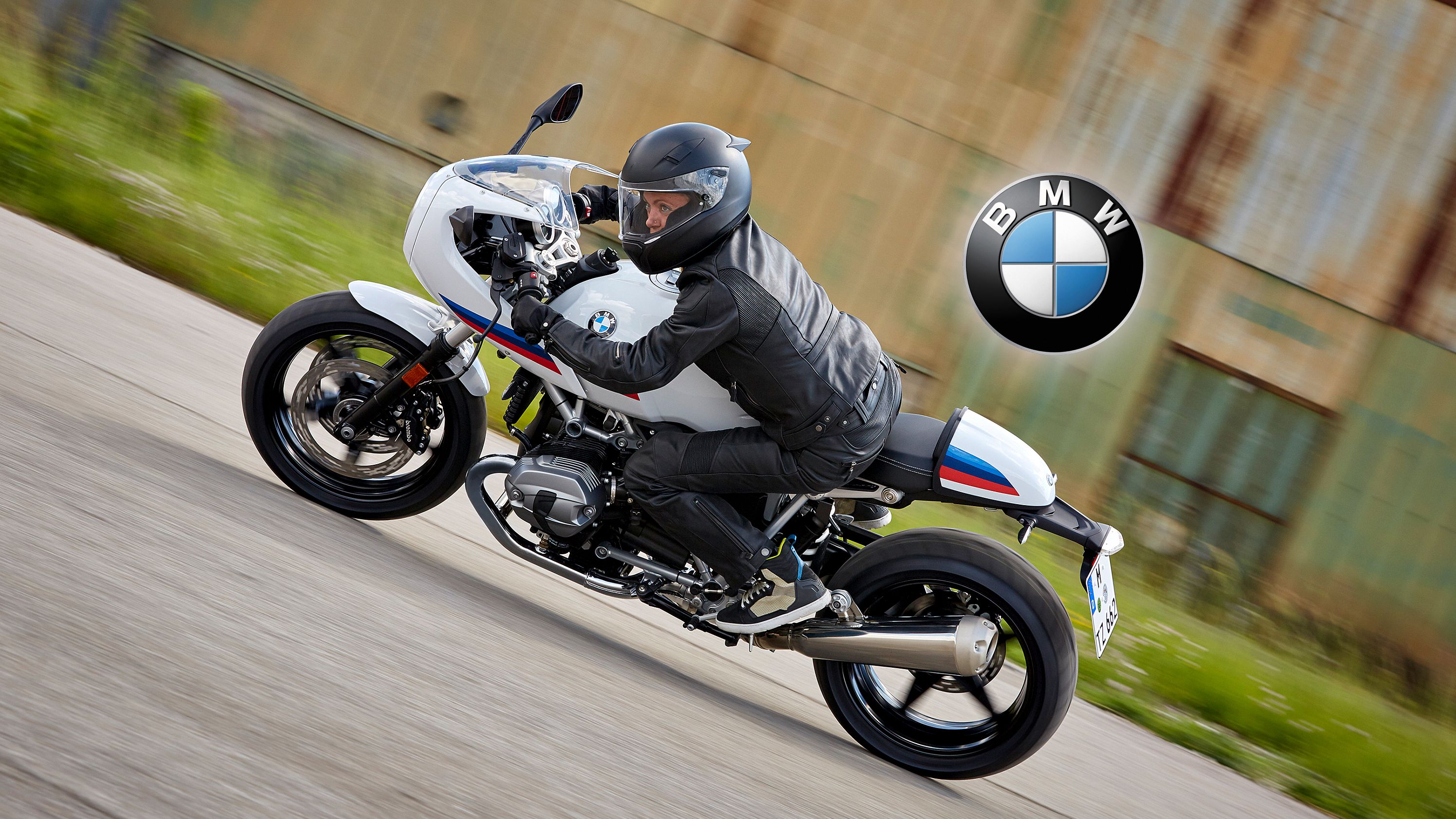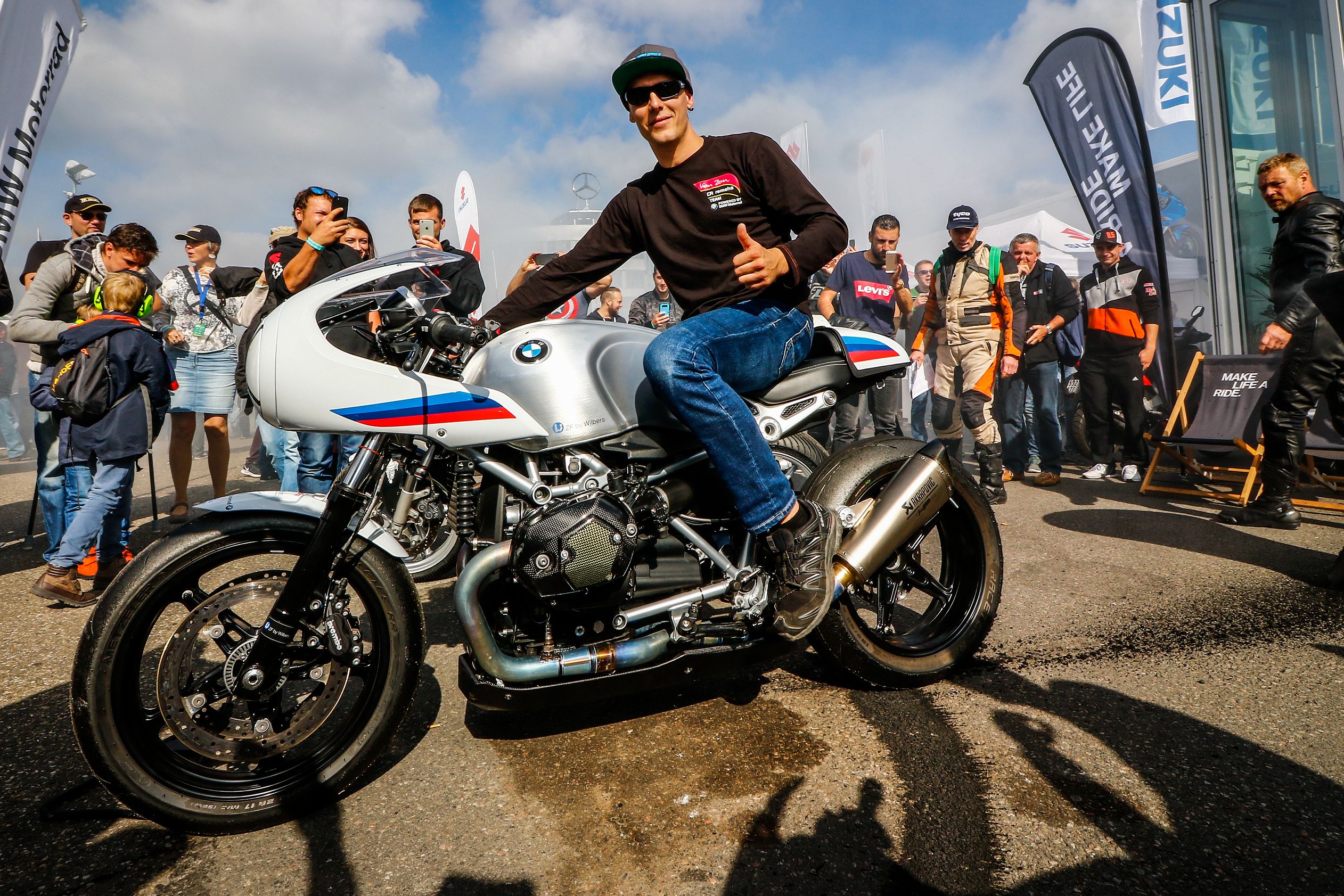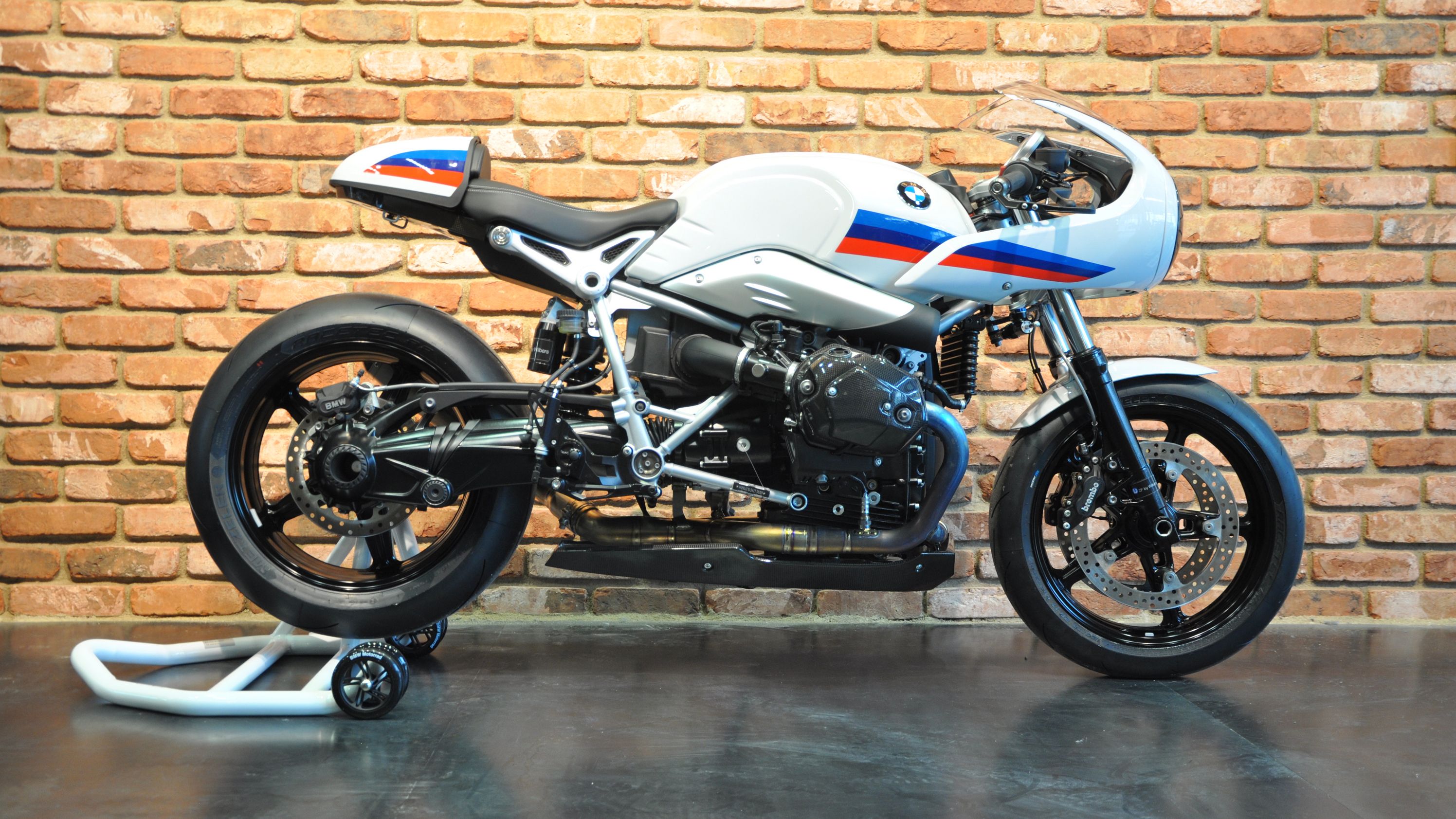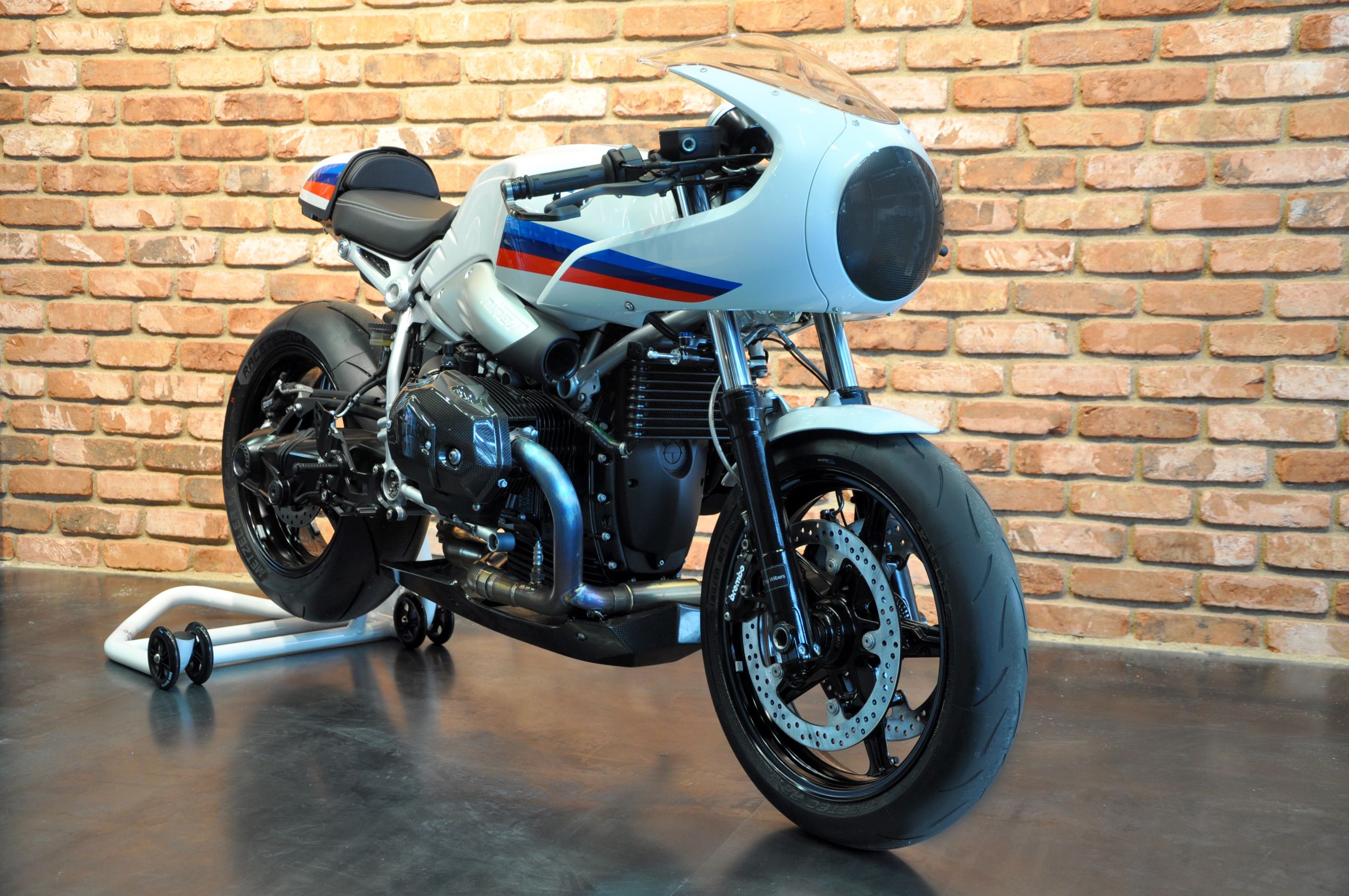BMW expanded its Heritage lineup for MY2017 with the R nineT “Racer” variant that it carries over right on into 2019. The Racer takes Beemer's popular roadster and gives it a café-tastic bent that, in spite of the fact that it adds more body components, seems to accentuate the essential nature of the model. Power comes from a classic boxer engine, and of course, the factory threw on a handful of extra safety items to help you keep it all under control.
2017 - 2019 BMW R nineT Racer
- Make: Array
- Model: 2017 - 2019 BMW R nineT Racer
- Engine/Motor: Flat twin
- [do not use] Vehicle Model: Array
BMW R nineT Racer Design
The Racer leads the way with what is probably its most dominant and important feature: the fabulous full-bullet fairing that houses the cyclops headlight with a bubble screen and long-stem standoff mirrors up top. Sweepy fairing extensions down low kind of visually enclose the dead-short bars that are essentially just like clip-ons even if they're actually attached to the top triple-clamp and not the fork tube itself.
While the screen itself isn't likely to offer much protection for the pilot, even in the racer's tuck, it does a magnificent job of sheltering the dual analog gauges that display the speed and rpm metrics with small LED screens in each and indicator lights to cover all the remaining bases. Those twin clocks are clean, classy and fit right in with the seventies-fabulous vibe the rest of the machine gives off.
The long, 4.5-gallon fuel tank comes with very little rise and makes a nice shelf to lay across and tuck in (mostly) out of the slipstream. A wane at the rear tapers down to the narrow waist with generous knee pockets that pull the legs in out of the pressure, as well. A café-like subframe area sports a racing-style seat with a short rise buttstop ahead of the racing tailpiece that finishes off the body the same way it starts out; like a straight-up racing tribute piece.
The mudguard/plateholder handles the business of controlling the rear fling and, I'm gonna' go ahead and say that the Racer would look even better with a hugger instead, but I don't know what you'd do with the rearward lighting if you were to go that route. I remember the '70s, so I necessarily have an appreciation for the design characteristics of the time, but I think this bike should appeal to a broad buyer base. Yeah, aesthetics are a matter of taste, it's true, but if you don't like the Racer, you need to get yourself some taste other than that in your mouth.
BMW R nineT Racer Chassis
Beemer calls the skeleton a “modular steel tubular space frame” that rocks a front main frame and a rear main frame with a passenger frame (subframe) that can be easily struck from the bike in order to change up the seating configuration. In an effort to keep weight to a minimum, the frame uses a stressed-engine/tranny to displace some of the frame members and retain the necessary rigidity and manages to keep the heft down at 485-pounds, wet.
Rather than running its unusual Duolever system that supports so many of its machines, Beemer instead went with rwu, telescopic front forks to buoy the front end. The single-side, cast-aluminum swingarm rides with the Paralever system that features the obligatory variable spring-preload feature alongside a rebound-damping adjustment that allows you to dial it in just how you like/need/want it.
Symmetrical, 17-inch, cast-aluminum wheels mount race-rated “ZR” tires with a 120/70 up front followed by a 180/55. Steering geometry measures out with 26.4 degrees of rake and 4.1 inches of trail -- numbers that indicate good stability at speed -- over a 58.8-inch wheelbase with a stabilizer at the steering head to help limit kickback at the bars.
The brakes reflect the great energy the Racer is capable of generating. Dual 320 mm discs and four-piston calipers slow the front wheel with a twin-pot caliper to grab the 265 mm disc out back. Beemer's own ABS ensures you can get the most out of the anchors while still keeping it dirty-side down. For 2019, the Racer comes standard with a dynamic brake light for greater visibility.
|
Frame: |
Three-section frame consisting of one front and two rear sections, load-bearing engine-gearbox unit, removable pillion frame for single rider use |
|
Front suspension/Travel: |
Telescopic forks, Ø 43 mm/4.9” (125 mm) |
|
Rear suspension/Travel: |
Cast aluminum single swing arm with BMW Paralever; central spring strut, spring preload fully adjustable by hook wrench, rebound damping adjustable/ 4.7” (120 mm) |
|
Trail: |
4.1” (103.9 mm) |
|
Steering head angle: |
26.4° |
|
Wheels: |
Cast aluminum wheels |
|
Rims, Front/Rear: |
3.00 x 17" / 5.50 x 17” |
|
Tires, Front/-/Rear: |
120/70 ZR 17 /-/ 180/55 ZR 17 |
|
Brake, front: |
320 mm, Dual floating disc brakes, 4-piston calipers |
|
Brake, rear: |
265 mm, Single disc brake, dual-piston floating caliper |
|
ABS: |
BMW Motorrad ABS |
BMW R nineT Racer Drivetrain
The R nineT's identity is closely bound to its engine, even moreso than usual. A classic boxer engine drives the Racer, but don't let the dated configuration fool you; this machine is thoroughly modern and it features a well-tuned balance shaft to tame the vibrations. The opposed-twin cylinders run with a 101 mm bore and a 73 mm stroke with a total displacement of 1,170 cc. Dual over-head cams time the four-valve heads that stand proud of the machine on both sides, and I know that seems to be okay with the majority, but I still grip with the vulnerability of that arrangement just a bit.
Electronic fuel injection meters the fuel to help meet EU-4 emissions standards and keep mileage up around 44 mpg with help from a catalyst in the exhaust system to burn off anything that escapes during the exhaust-gas scavenging (overlap) part of the stroke. Air cooling deals with the bulk of the waste heat with an oil cooler that draws off even more heat and adds another layer of protection for the engines lifeblood.
How does the power shake out? Well, the plant generates a total of 110 horsepower at 7,750 rpm with 86 pound-feet of torque at six grand, and with the quiet helical-cut gearing in the six-speed gearbox, you can expect a top speed of over 125 mph, ya know, if you have the testicular fortitude for it.
|
Engine: |
Air/oil-cooled 4-stroke flat twin engine with balance shaft, four valves per cylinder, double overhead camshaft, wet sump lubrication |
|
Bore x stroke: |
101 mm x 73 mm |
|
Displacement: |
1,170 cc |
|
Rated output: |
110 hp (81 kW) at 7,750 rpm |
|
Max. torque: |
86 lb-ft (116 Nm) at 6,000 rpm |
|
Compression ratio: |
12.0:1 |
|
Mixture control / engine management: |
Electronic fuel injection |
|
Emission control: |
Closed-loop 3-way catalytic converter, emission standard EU-4 |
|
Clutch: |
Single dry plate clutch, hydraulically operated |
|
Gearbox: |
Constant mesh 6-speed gearbox with helical cut gears |
|
Drive: |
Shaft drive 2.91:1 |
BMW R nineT Racer Pricing
You can score yourself an R nineT Racer for $13, 545 in a fetching Light White finish with blue, black and red graphics. As usual, Beemer gives you plenty of opportunity to inflate that a bit with a robust set of optional equipment and pimpin' billet packages that add even more to its curb appeal.
|
Color: |
Light White |
|
Price: |
$13,545 |
BMW R nineT Racer Competitors
The name “café racer” gets thrown around a lot these days. Manufacturers with no actual CR experience use the name and take liberties with the design, but Triumph ain't one of 'em. The British heavyweight produces the Thruxton 1200 R for those of us in the know, and I see it as a solid competitor for Beemer's R nineT Racer.
Right off the bat, I have to gig Trumpet for neglecting the bullet fairing that really sells the look. Yeah, I know that not all classic CRs had one, many did not, but there's no denying that the Racer's bullet puts the café look over the top. The Thruxton's tail cowl does hit another of the important high points, and the seat and long fuel tank comes complete with knee pockets to sell the look, even if it isn't quite as complete as BMW's entry. One tiny detail I really dig on the Trumpet is the throttle bodies that look like the old mechanical-slide carbs. Yeah, it's minor, but freakin' cool all the same.
In spite of Beemer's Racer moniker, Triumph actually puts out a more race-tastic machine with fully adjustable stems fore-and-aft to go with the massive brakes and ABS coverage. The Thruxton sports a classic parallel-twin powerplant that cranks out 97 ponies and 86 pounds o' grunt for a slight power deficit against the Racer's 110/86. Triumph gains an edge in the electronics with traction control and riding mode features for which the Racer has no answer. You'll pay for that tech though, literally, as the Thruxton 1200 R comes with a $15,000 price tag. Is it worth the extra dough? Maybe, if you think your skillset is such that you'd benefit from the slight edge afforded by the suspension components, but my money would be on the Bayerische.
He Said
“Just freakin' love it, in spite of the engine configuration. The bullet fairing and tail cowl really do it for me, and of course, so does everything in between. This is one of the CR models currently on the market that actually deserves the name, so kudos on a job well done, guys.”
She Said
My wife and fellow motorcycle writer, Allyn Hinton, says, “For a retro bike, it really puts you in a racer riding position pulled forward over the tank. It has a very low center of gravity so it is surprisingly easy to handle at parking-lot speeds and it quite begs for twisty roads. If you're looking for a retro-racer style, this could be your Huckleberry.”
BMW R nineT Racer Specifications
|
Engine & Drivetrain: |
|
|
Engine: |
Air/oil-cooled 4-stroke flat twin engine with balance shaft, four valves per cylinder, double overhead camshaft, wet sump lubrication |
|
Bore x stroke: |
101 mm x 73 mm |
|
Displacement: |
1,170 cc |
|
Rated output: |
110 hp (81 kW) at 7,750 rpm |
|
Max. torque: |
86 lb-ft (116 Nm) at 6,000 rpm |
|
Compression ratio: |
12.0:1 |
|
Mixture control / engine management: |
Electronic fuel injection |
|
Emission control: |
Closed-loop 3-way catalytic converter, emission standard EU-4 |
|
Clutch: |
Single dry plate clutch, hydraulically operated |
|
Gearbox: |
Constant mesh 6-speed gearbox with helical cut gears |
|
Drive: |
Shaft drive 2.91:1 |
|
Chassis: |
|
|
Frame: |
Three-section frame consisting of one front and two rear sections, load-bearing engine-gearbox unit, removable pillion frame for single rider use |
|
Front wheel location / suspension: |
Telescopic forks, Ø 43 mm |
|
Rear wheel location / suspension: |
Cast aluminum single swing arm with BMW Paralever; central spring strut, spring preload fully adjustable by hook wrench, rebound damping adjustable |
|
Suspension travel front / rear: |
4.9” / 4.7” (125 mm / 120 mm) |
|
Trail: |
4.1” (103.9 mm) |
|
Steering head angle: |
26.4° |
|
Wheels: |
Cast aluminum wheels |
|
Rim, front: |
3.00 x 17" |
|
Rim, rear: |
5.50 x 17” |
|
Tire, front: |
120/70 ZR 17 |
|
Tire, rear: |
180/55 ZR 17 |
|
Brake, front: |
Dual floating disc brakes, 4-piston calipers, diameter 320 mm |
|
Brake, rear: |
Single disc brake, diameter 265 mm, dual-piston floating caliper |
|
ABS: |
BMW Motorrad ABS |
|
Dimensions & Capacities:}} |
|
|
Wheelbase: |
4.1” (103.9 mm) |
|
Length: |
82.9” (2,105 mm) |
|
Width (incl. Mirrors): |
36.2” (920 mm) |
|
Height (incl. Mirrors): |
43.5” (1,105 mm) |
|
Seat height, unladen weight: |
Standard Seat: 31.7", Custom Front Seat: 31.3" |
|
Inner leg curve, unladen weight: |
Standard Seat: 70.3", Custom Front Seat: 69.9" |
|
Unladen weight, road ready, fully fueled: |
485 lbs (220 kg) |
|
Permitted total weight: |
948 lbs (430 kg) |
|
Payload (with standard equipment): |
463 lbs (210 kg) |
|
Usable tank volume: |
4.5 gal (17 l) |
|
Reserve: |
Approx. 1 gal (3.5 L) |
|
Maximum speed: |
Over 125 mph |
|
Fuel consumption (WMTC): |
44 mpg |
|
Fuel type: |
Premium Unleaded |
|
Electricals: |
|
|
Alternator: |
Three-phase alternator 720 W |
|
Battery: |
12 V / 14 Ah, maintenance free |
|
Details: |
|
|
Color: |
Light White |
|
Price: |
$13,545 |
Further Reading
Triumph Thruxton 1200 /1200R
See our review of the Triumph Thruxton 1200 / 1200 R.
BMW Motorrad
Read more BMW news.


